It was a hot afternoon in August last year when I entered the country of Switzerland for the first time. I had just finished up a vegan wrap in the German city of Konstanz when I drove over the border and followed a gorgeous road along the banks of Lake Constance and later the Rhine to the Swiss town of Stein am Rhein.
My mum and I were planning to travel around Switzerland a few months later, so I decided to only visit the canton of Schaffhausen in the north. The canton’s territory is divided into three non-contiguous segments, separated from the rest of Switzerland by the Rhine and surrounded on the other three sides by Germany. Several road bridges connect the territories to the rest of the country, so they are not considered practical exclaves, but the canton does hold one true geographical oddity, the German exclave of Büsingen am Hochrhein which is surrounded by Swiss territory.
Stein am Rhein, one of the best preserved medieval towns in Europe
One of few Swiss towns north of the Rhine is Stein am Rhein, possibly the best kept secret in the entire country. Far away from the Alps and the beaten track lies this small, historic town with possibly the prettiest and best-preserved medieval centre I’ve ever seen. The medieval town gates are preserved, though the former town wall can no longer be seen as townhouses have replaced it. However, it’s easy to see where the wall once stood, especially from above. Before entering the town itself, I drove up near Hohenklingen Castle from the early 13th century for the perfect view of the town.
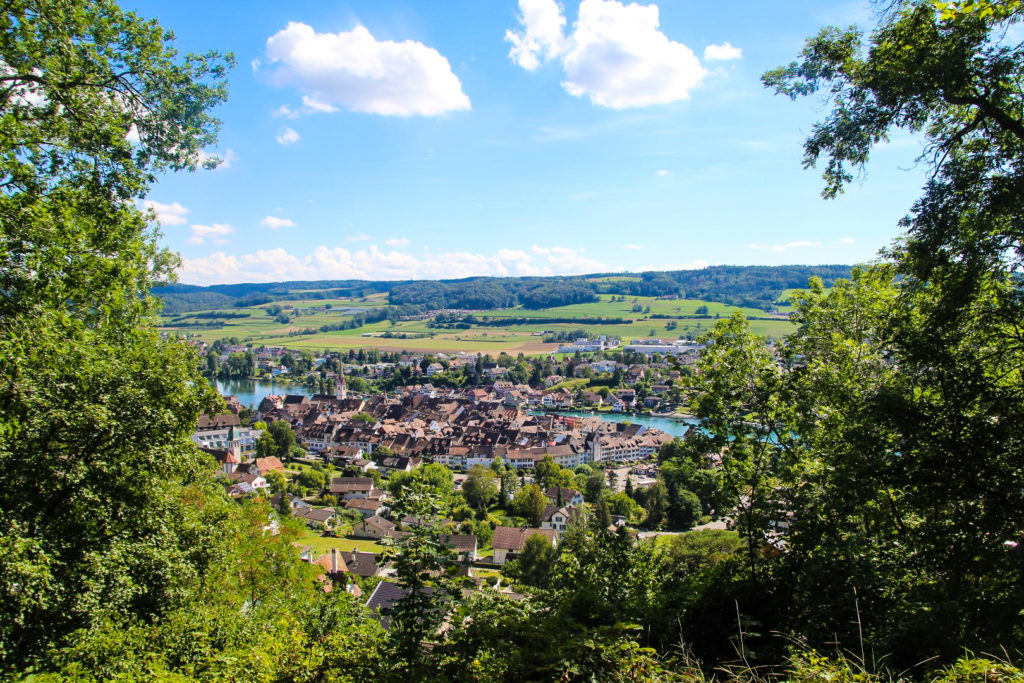
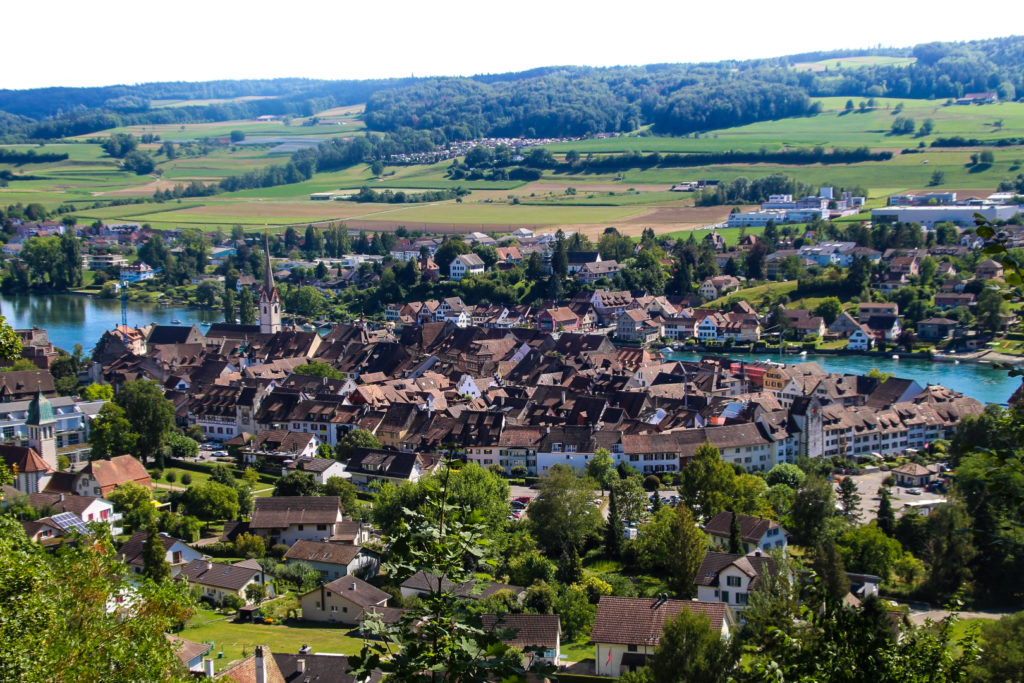
I then drove towards the town centre and parked just outside Undertor, one of the two preserved town gates from the medieval period. I strolled through the gate, and my jaw dropped. I knew Stein am Rhein would be beautiful, but I wasn’t prepared for a town centre that is jam-packed with quaint old houses full of elaborately painted murals that line the cozy cobbled streets. The town is like a giant, open-air art museum, full of pastel colours and dainty details that will have you spellbound within a second. I’ve never seen a town quite like it.
I walked down to the Rhine to discover a different side to Stein am Rhein that only made me love the town more. Pretty houses are dotted along the turquoise waters of the river, where several people were flowing by, an excellent choice considering the hot weather. For a moment, I wished I could join them.
The town may not have a backdrop of the Alps, and with little more than 3,000 inhabitants, Stein am Rhein may seem insignificant compared to Swiss cities like Zurich, Bern and Geneva, but the town centre is so unique that I’d recommend prioritizing it on any visit to Switzerland (or as a day trip from southwestern Germany!).
Before leaving Stein am Rhein behind, I walked into the town centre and the main square of Rathausplatz again, just so I could take one last look at the exceptional murals.
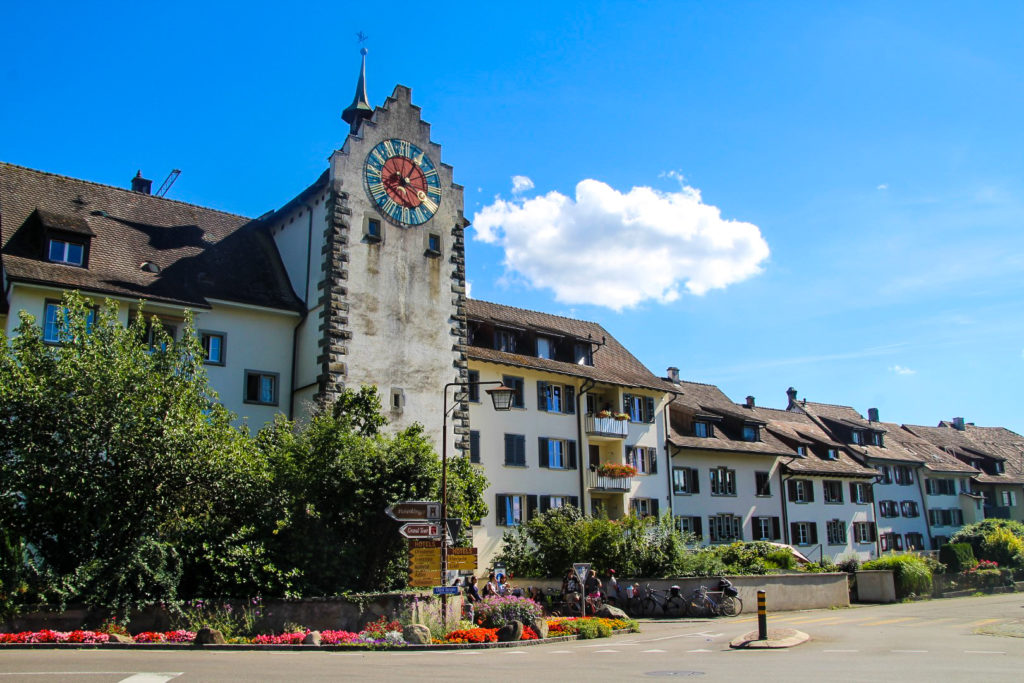
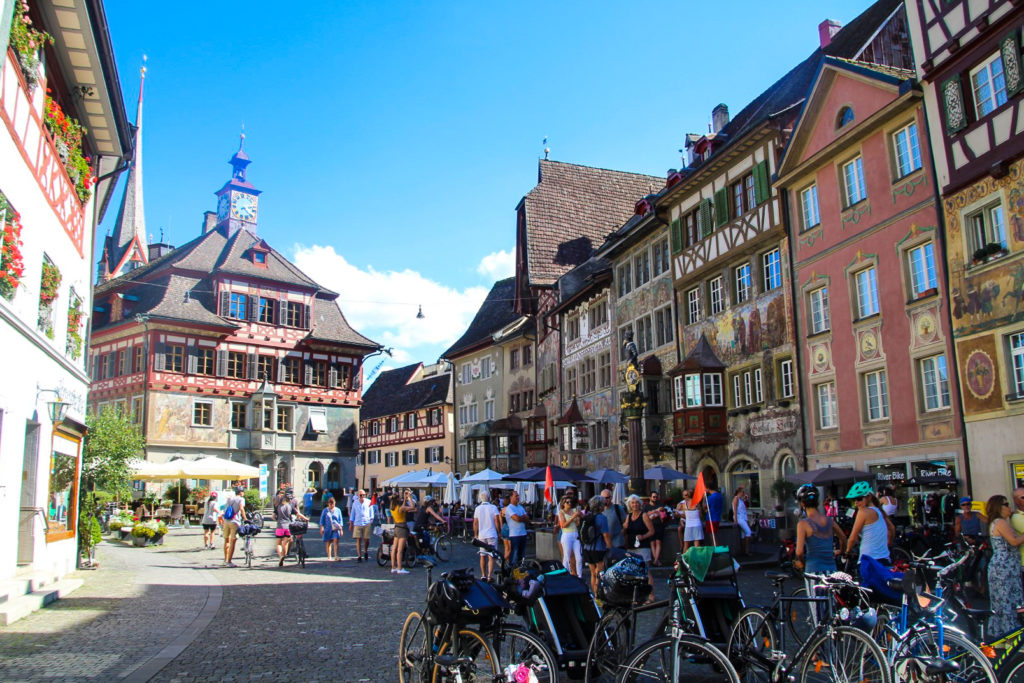
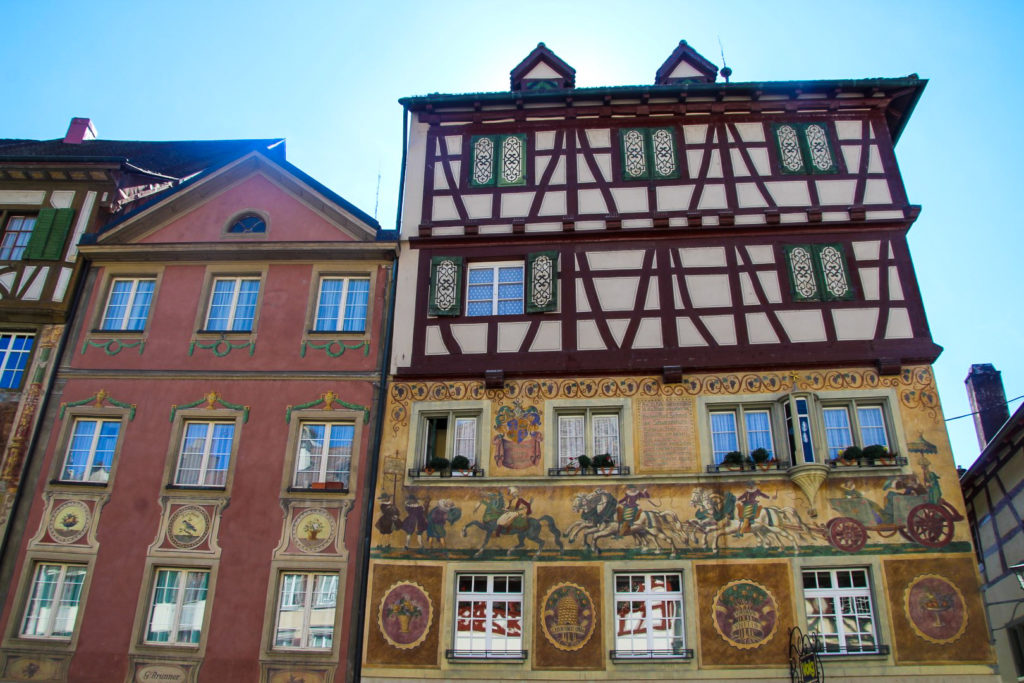
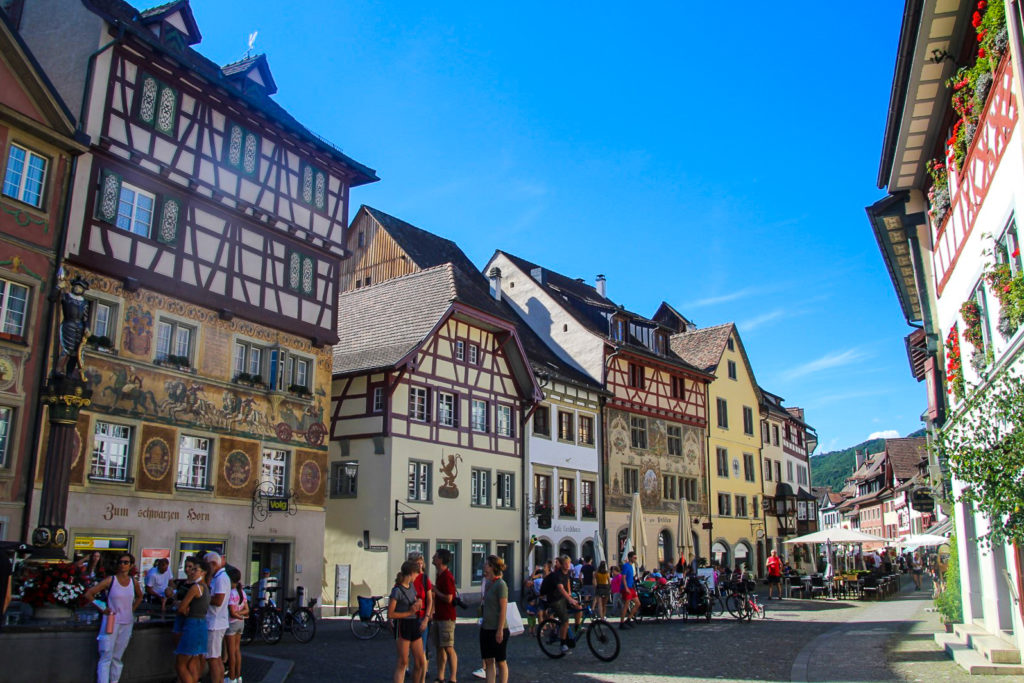
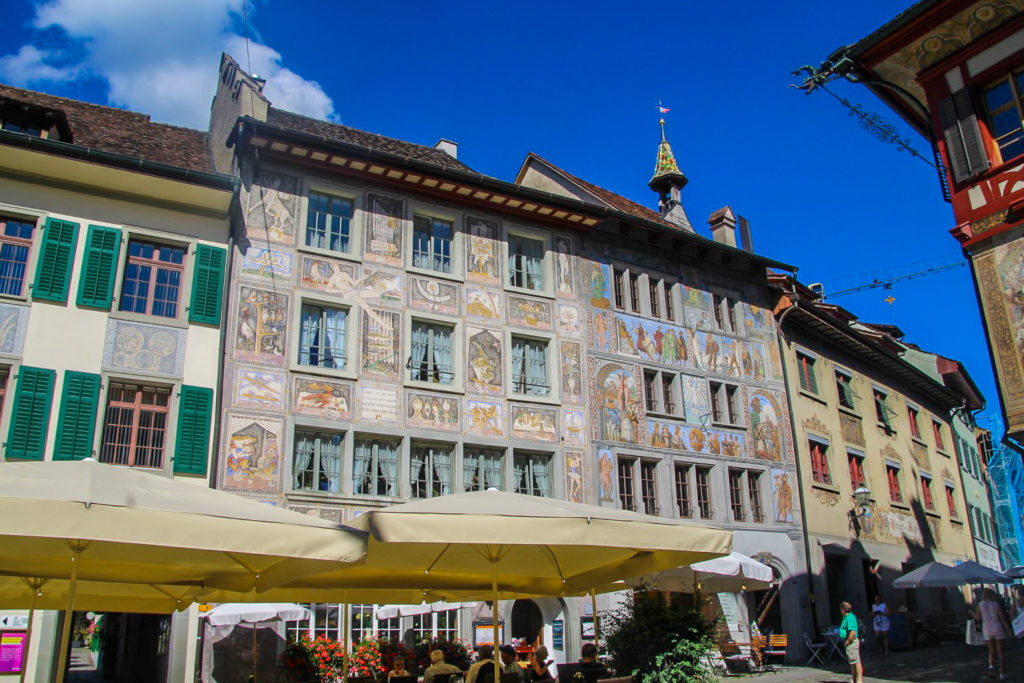
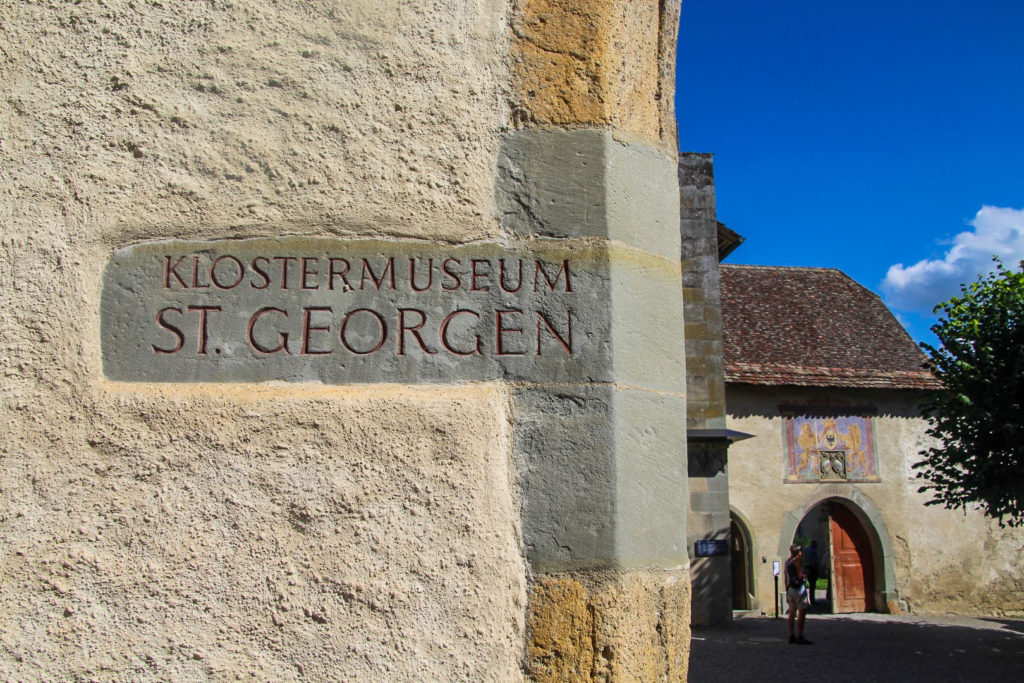
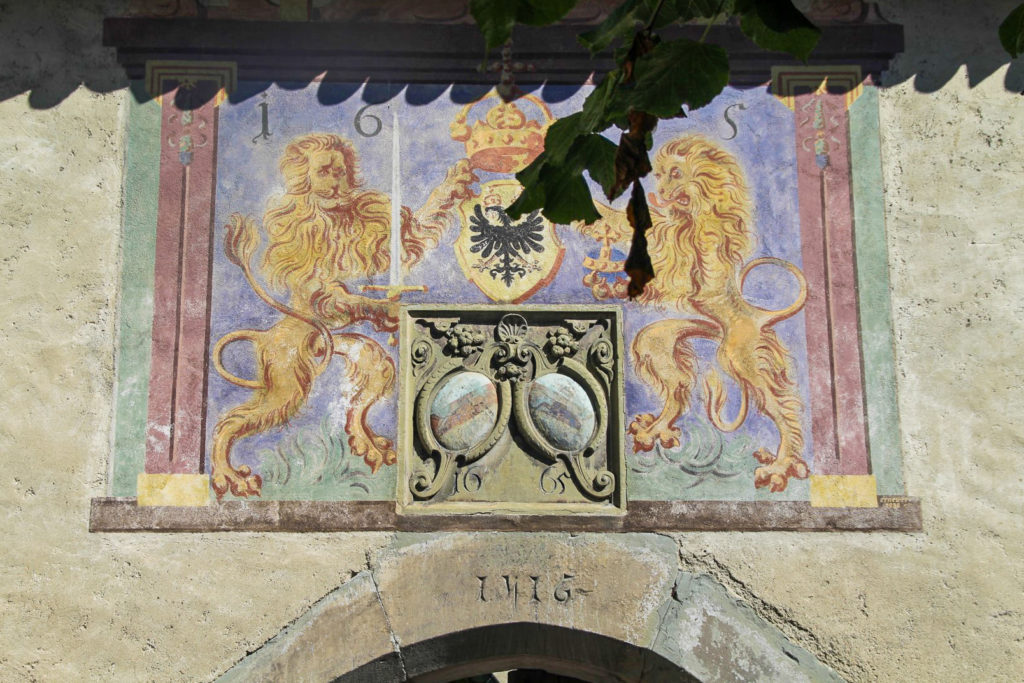
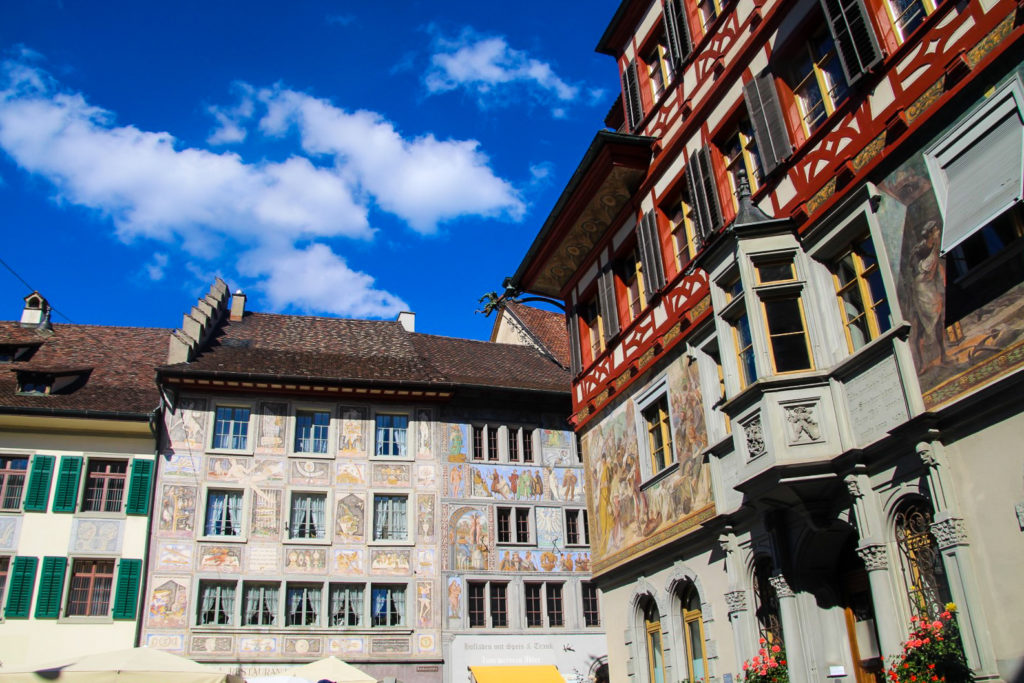
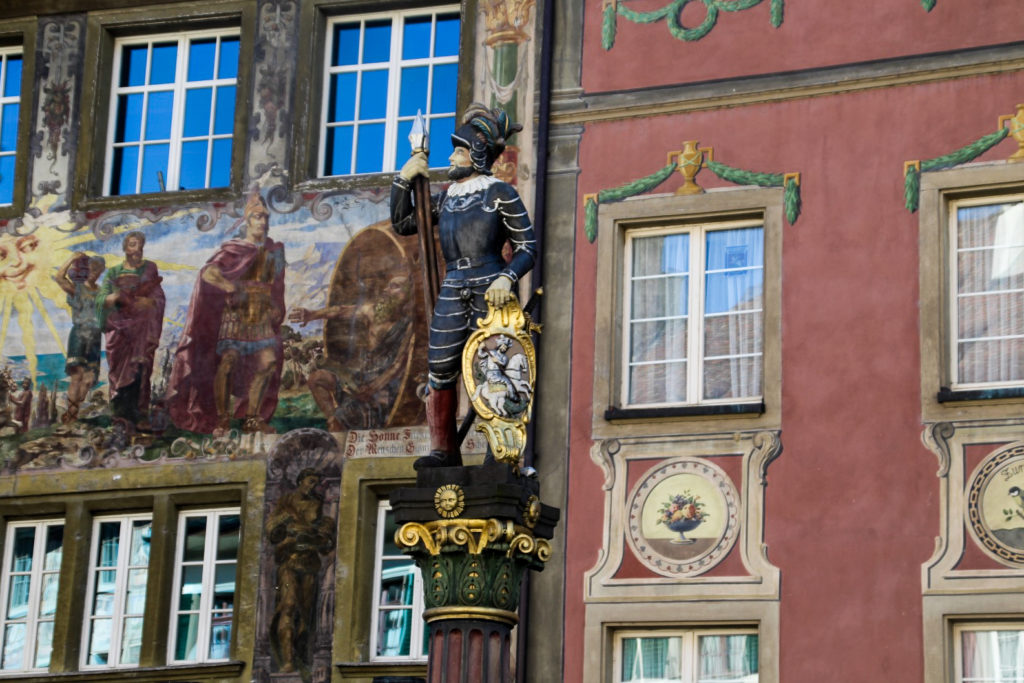
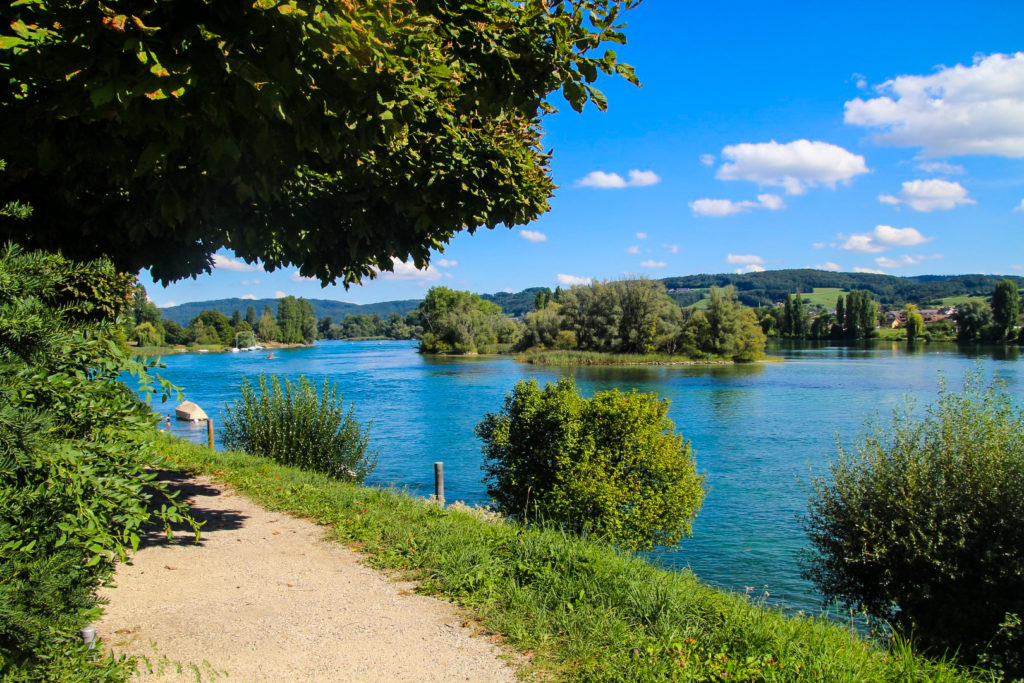
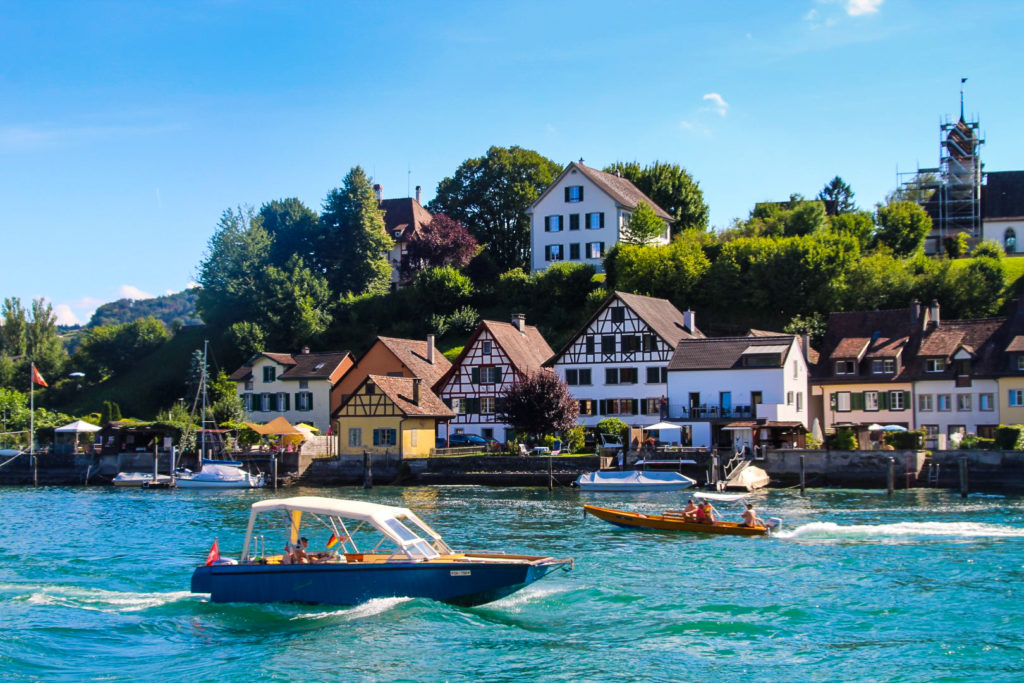
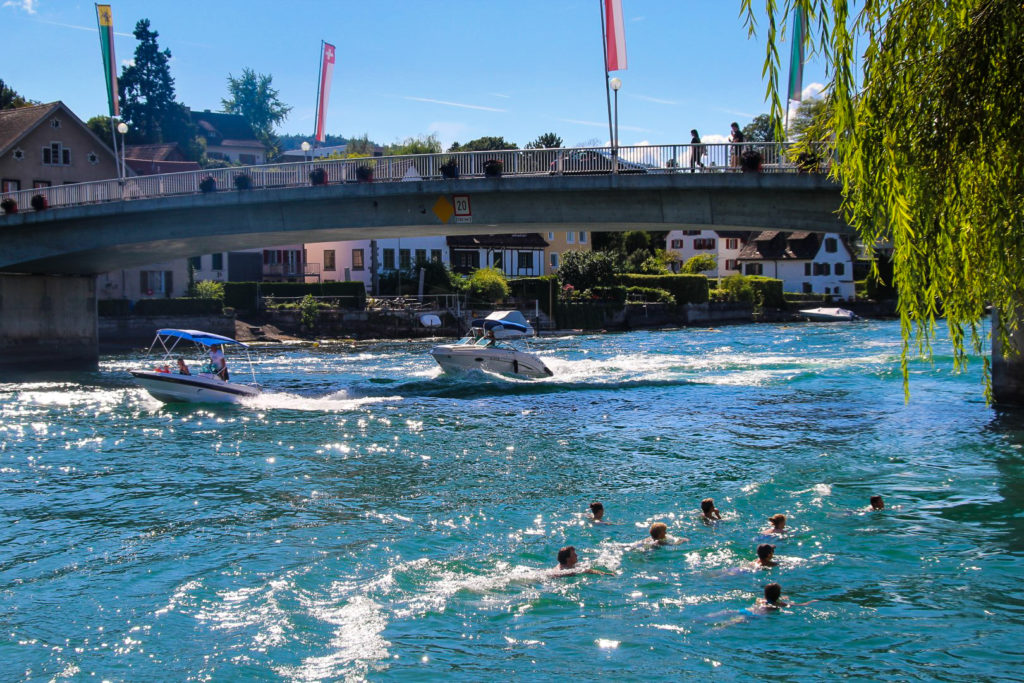
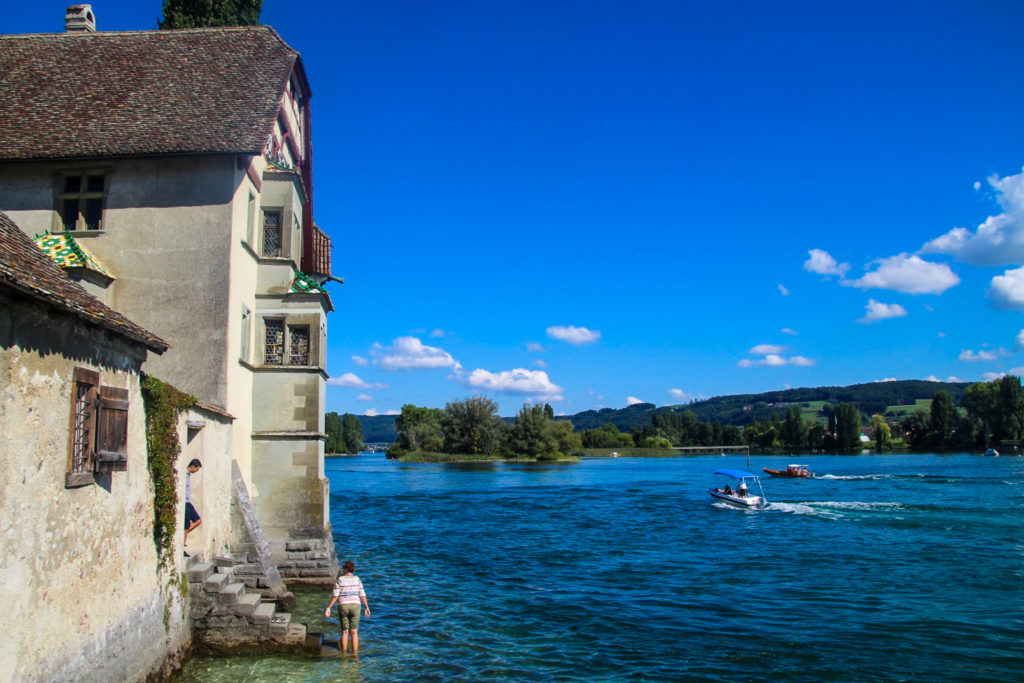
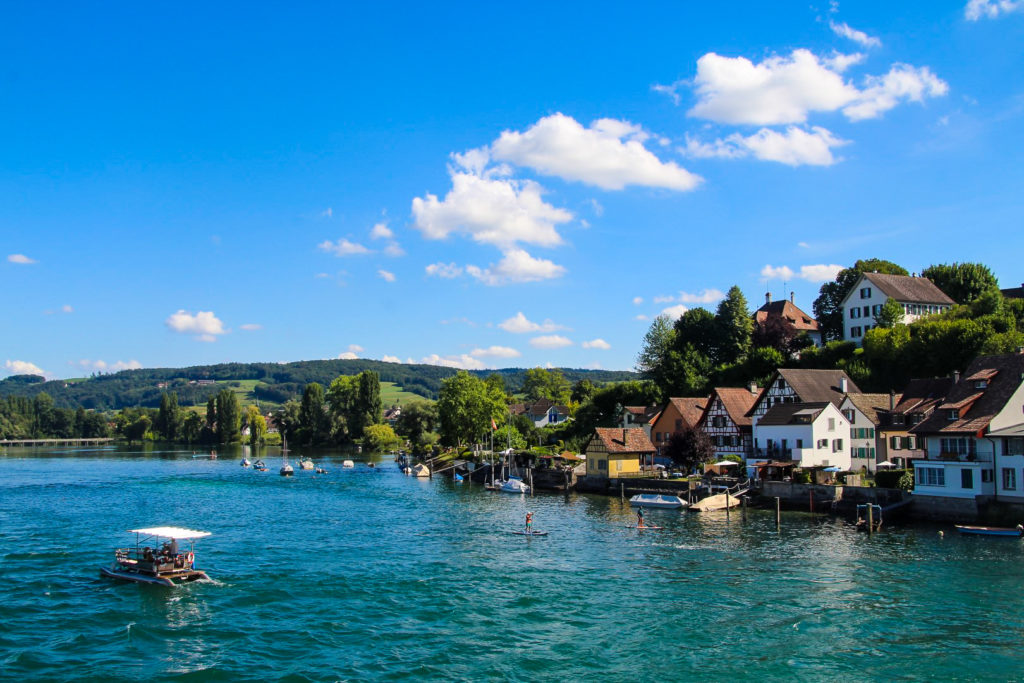
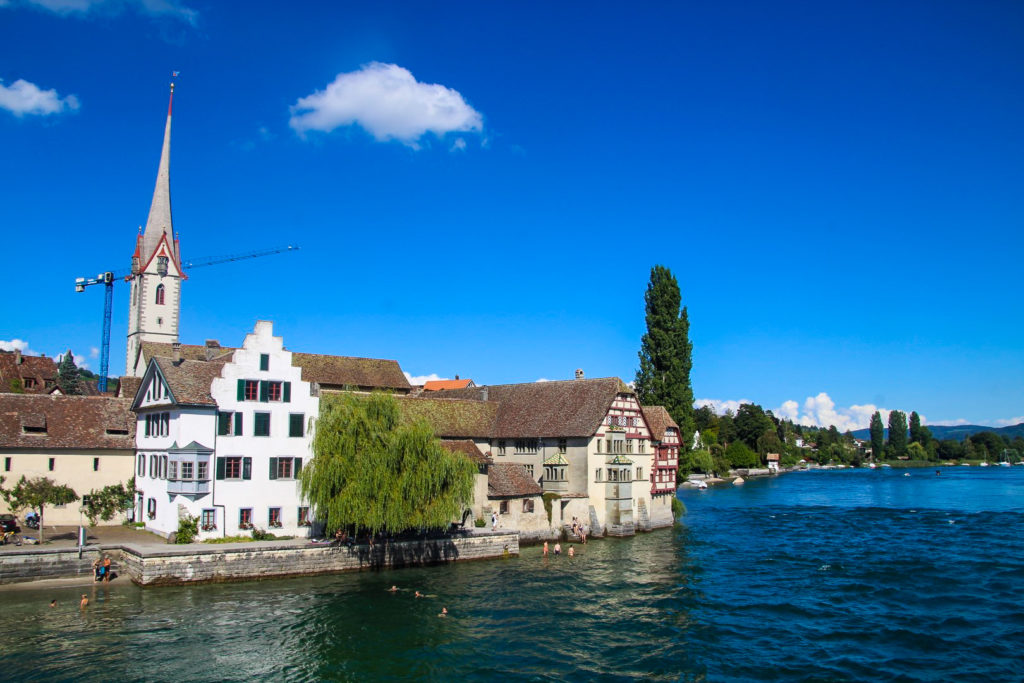
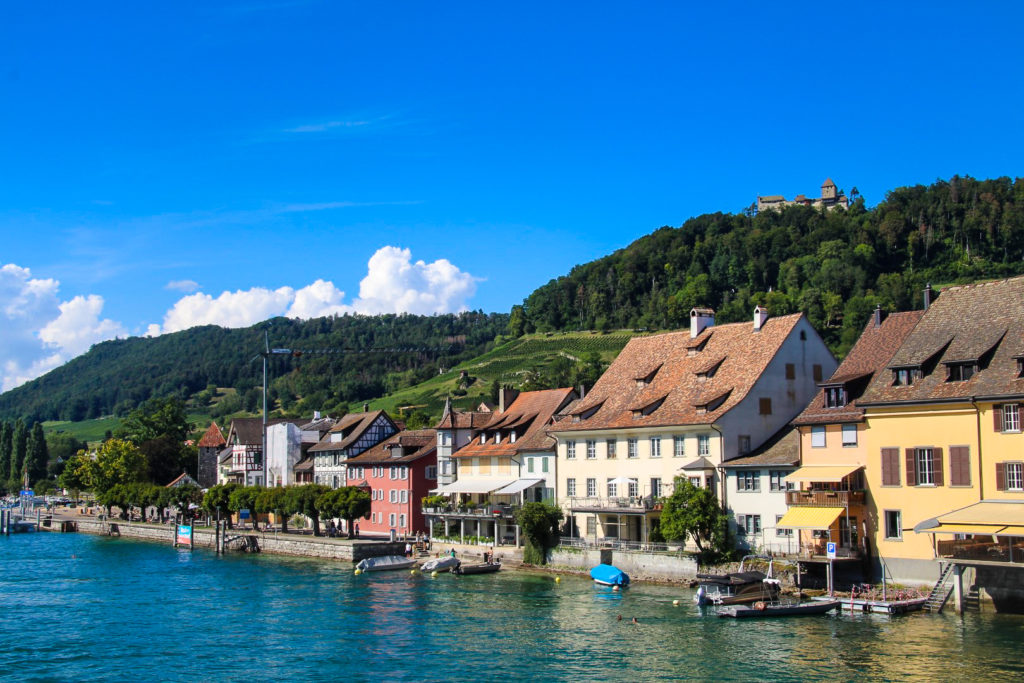
Büsingen am Hochrhein, a slice of Germany inside Switzerland
I continued along the country roads through the soft green hills of northern Switzerland and soon crossed the border between Switzerland and Germany again, this time entering the German village of Büsingen am Hochrhein (commonly known as Büsingen), which is an exclave surrounded entirely by Switzerland. The rest of Germany is only 680 m away, separated by a narrow strip of land. It’s a place I’ve dreamt of visiting ever since I became interested in geographical oddities and saw a picture of a restaurant which lies directly on the border and has a line painted across the outdoor dining terrace, marking the international border!
The tiny exclave was long under Austrian control although the Swiss authorities often tried to annex the area, especially during the 17th and 18th centuries. In 1835, the conflict was settled when Büsingen became part of the German customs territory. In 1918, after the First World War, a referendem was held in Büsingen in which 96 % voted to leave Germany and become part of Switzerland. However, this never happened as Switzerland couldn’t offer any suitable land in exchange to Germany. The exclave was formally defined in 1967, and Büsingen officially entered into a customs union with Switzerland. At the same time, the former German exclave of Verenahof, consisting of just three homes, became part of Switzerland. With just over 1,400 inhabitants, Büsingen must be too important for Germany to give up.
Büsingen has since managed a binational existence where it’s politically and legally part of Germany, but economically Swiss. It’s the only place in Germany that doesn’t belong to the EU nor uses the Euro, instead it unofficially uses the Swiss Franc. The local football team, FC Büsingen, is the only German team to play in the Swiss Football League. Swiss police are permitted to arrest German citizens of Büsingen and bring them into Switzerland. Both German and Swiss postal codes can be used to send letters to Büsingen, and letters may be franked with a German or Swiss stamp. Electricity is provided by Switzerland although the wall sockets are generally standard German Schuko sockets, and residents usually have both a German and a Swiss phone number. Residents can choose either a German or Swiss health insurance policy, and after primary school, the parents can choose either a German school or a Swiss school for secondary education. It must all be terribly confusing!
The borders are entirely open, although it hasn’t always been that way. Switzerland shut down the border during the Second World War, cutting the exclave off from the rest of the Third Reich. Today, you barely notice when you cross the border as there is zero border control.
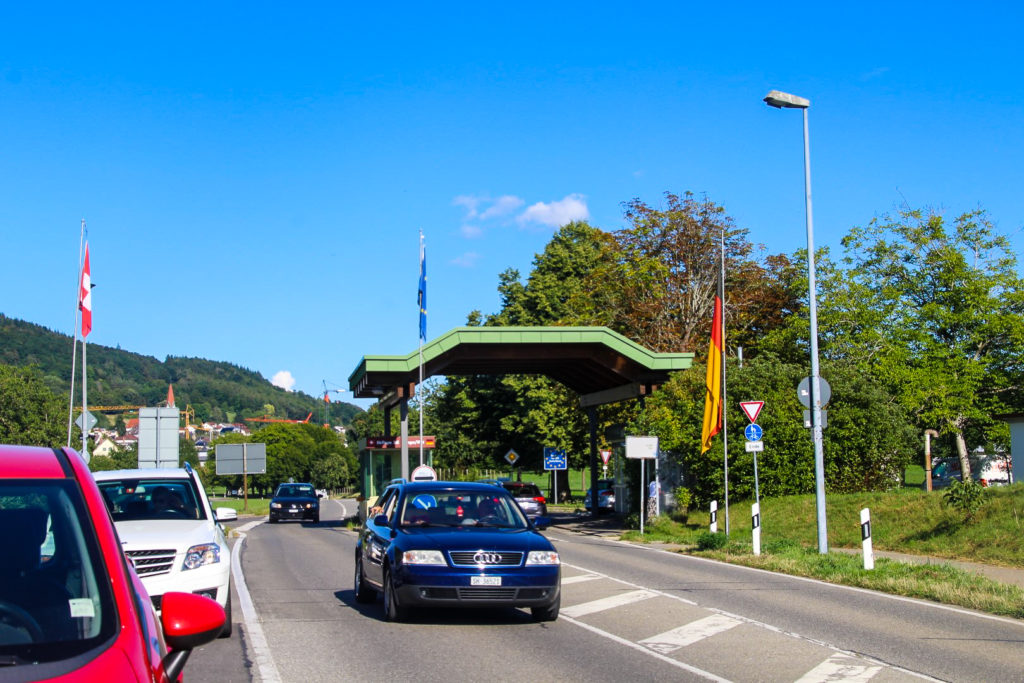
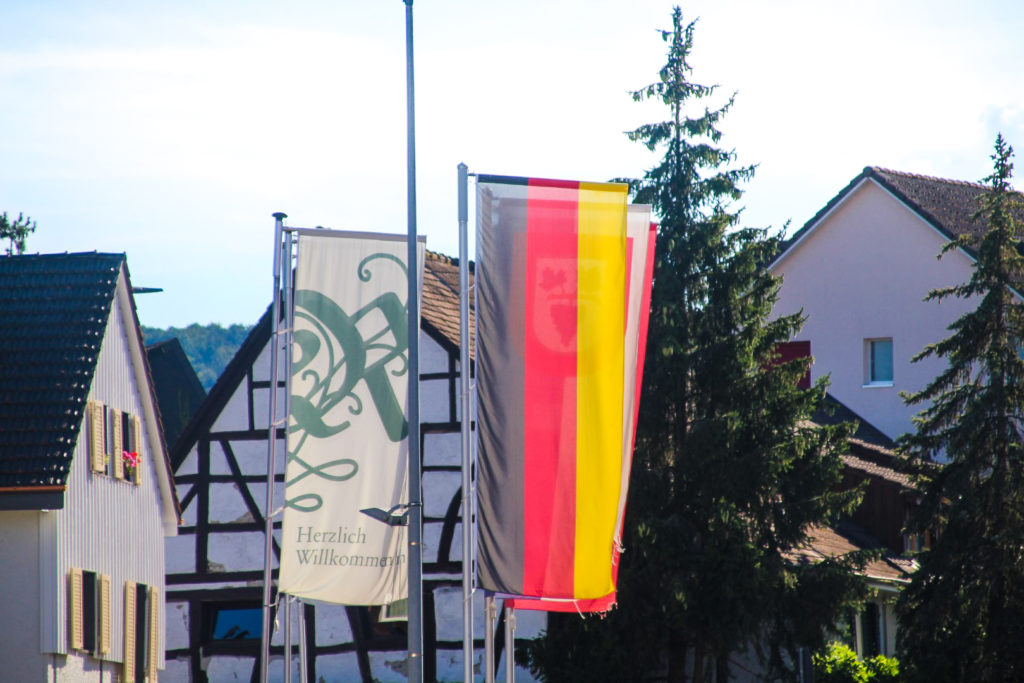
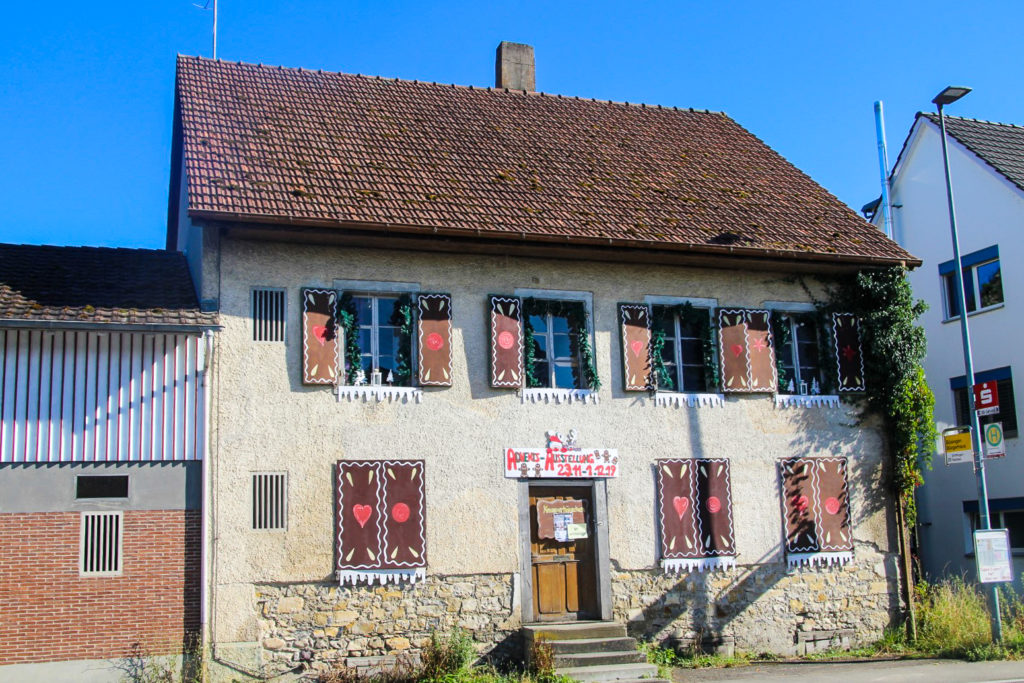
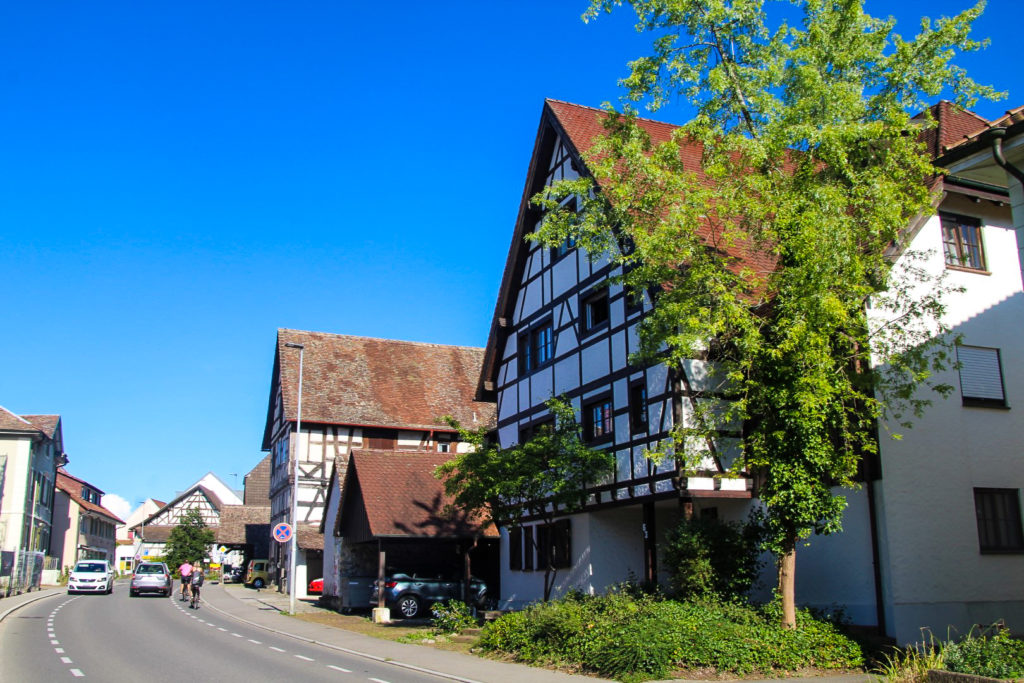
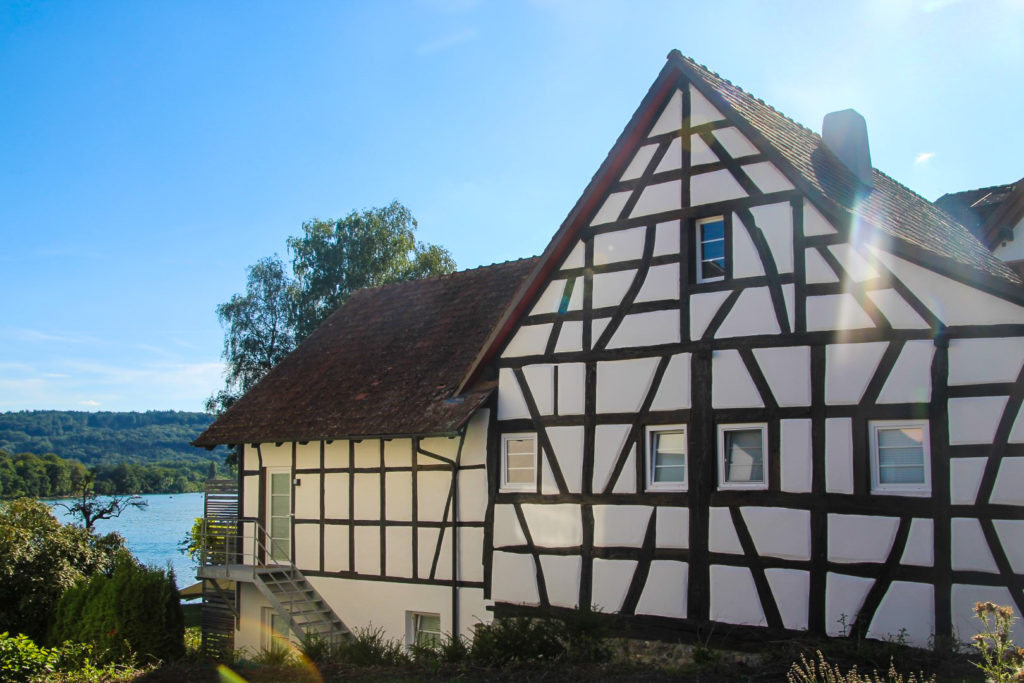
I spent a few hours exploring the exclave as I wanted to get a good feel for it. I parked my car in the village centre and set off on a 3 km hike to the restaurant that first brought the place to my attention!
I soon joined onto Enklavenweg, a well-signposted circular route around the exclave which explains life in Büsingen and its special geographical and political status. The trail took me down to the Rhine where lots of people were swimming and floating. I couldn’t help but wonder if they ever consider how odd it is that they can swim across the river from Germany to Switzerland in a matter of seconds. To them, it’s probably completely normal to visit either country often, probably not even realizing when they cross the international border! At one point, I even crossed the border without realizing until I looked at a map and saw that I had entered Swiss territory!
Sweating from the hot afternoon sun, I reached Waldheim Restaurant. Usually when I travel alone, I don’t go to restaurants but this one is special. I wasn’t hungry so I settled for a cold Coke Zero and found myself a table to sit at in Germany, while trying to communicate with a dog sitting a few metres away in Switzerland, just across the painted line.
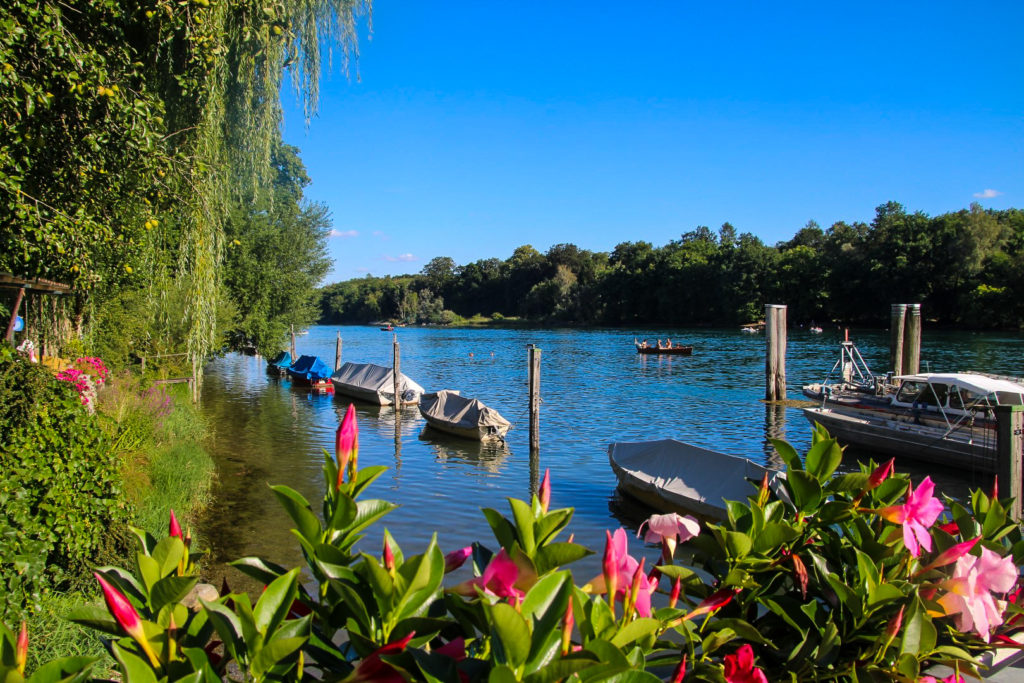
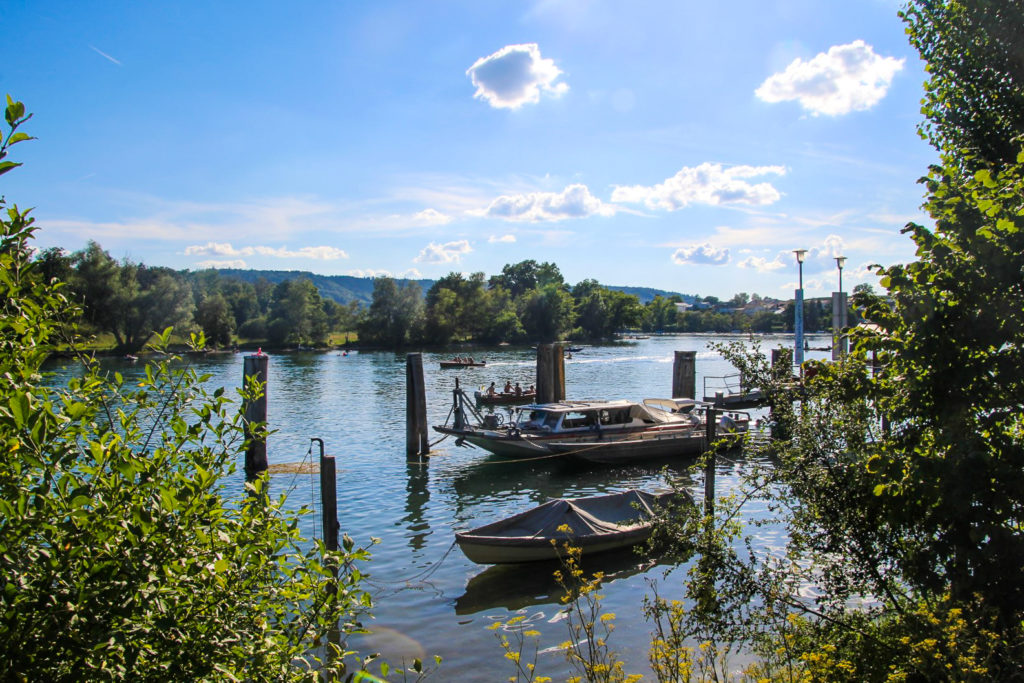
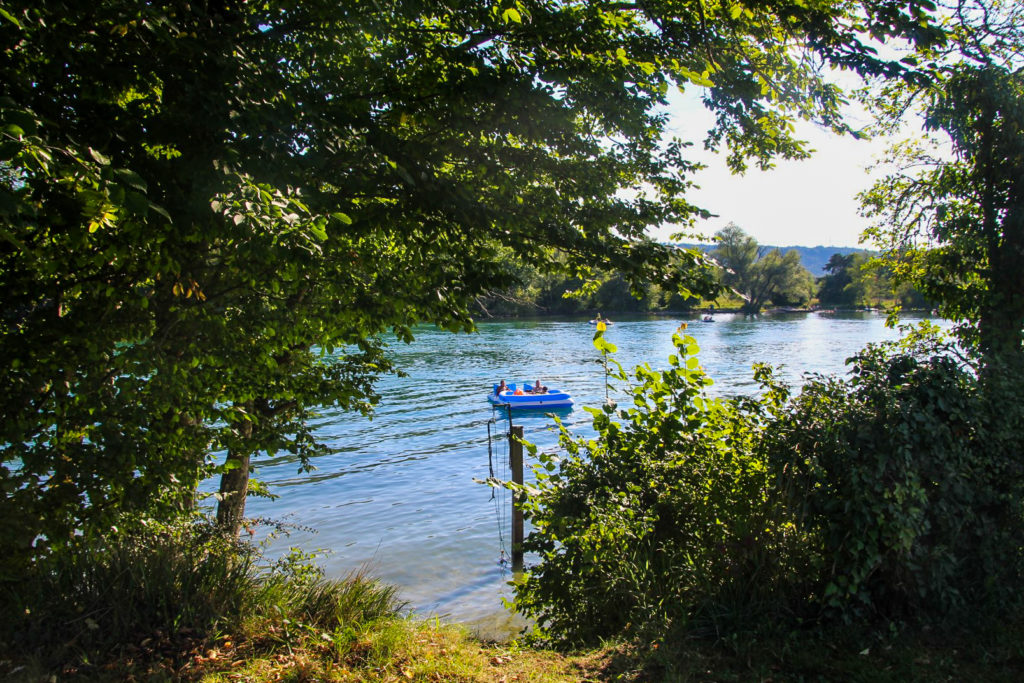
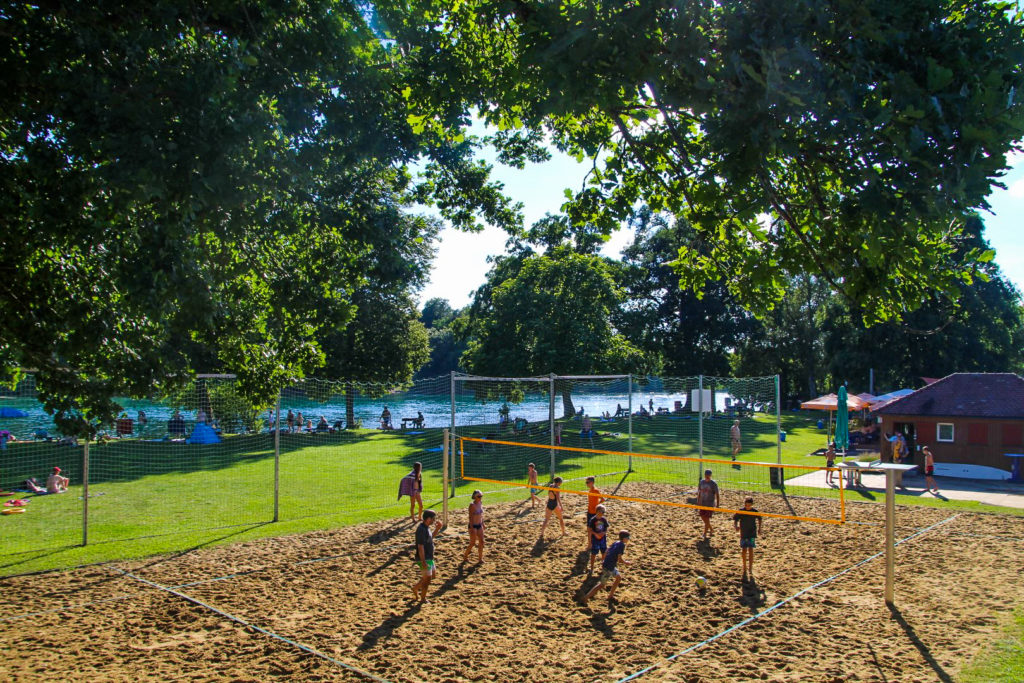
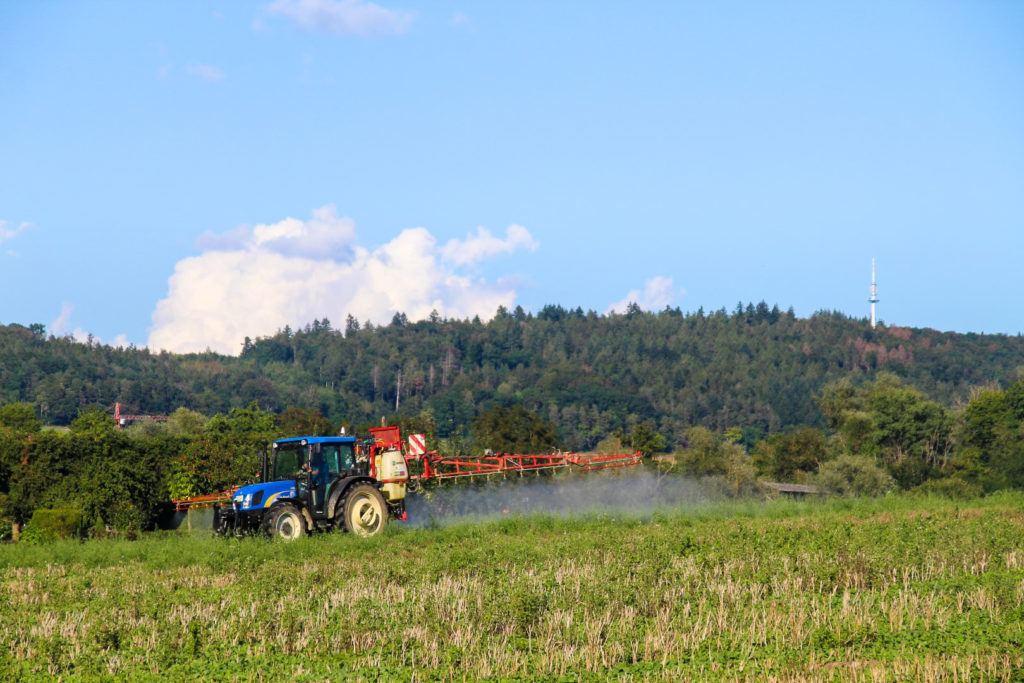
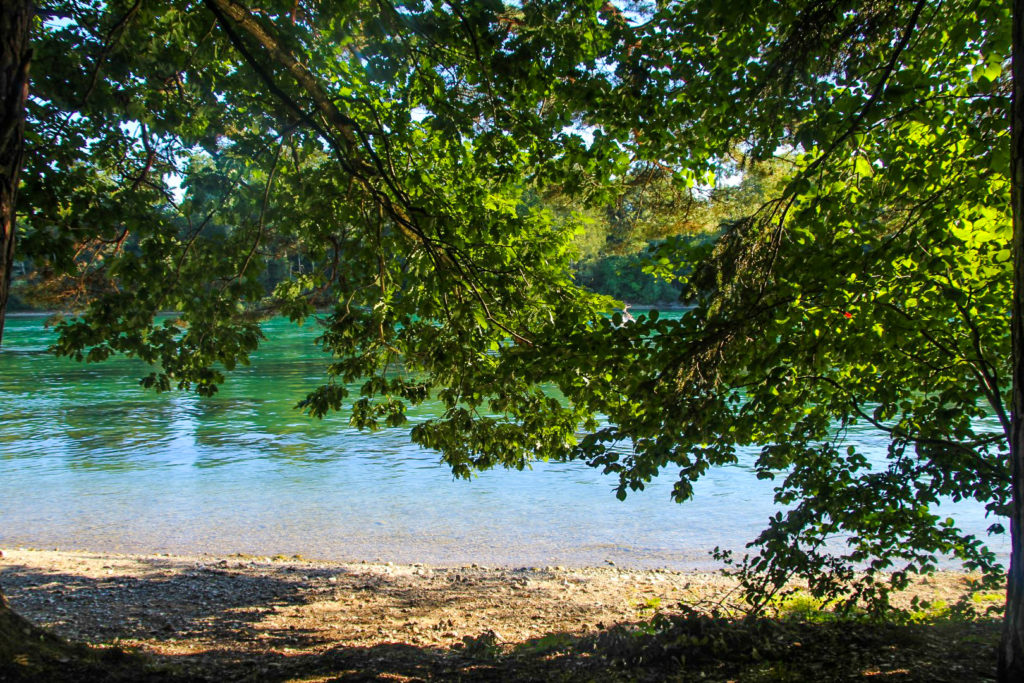
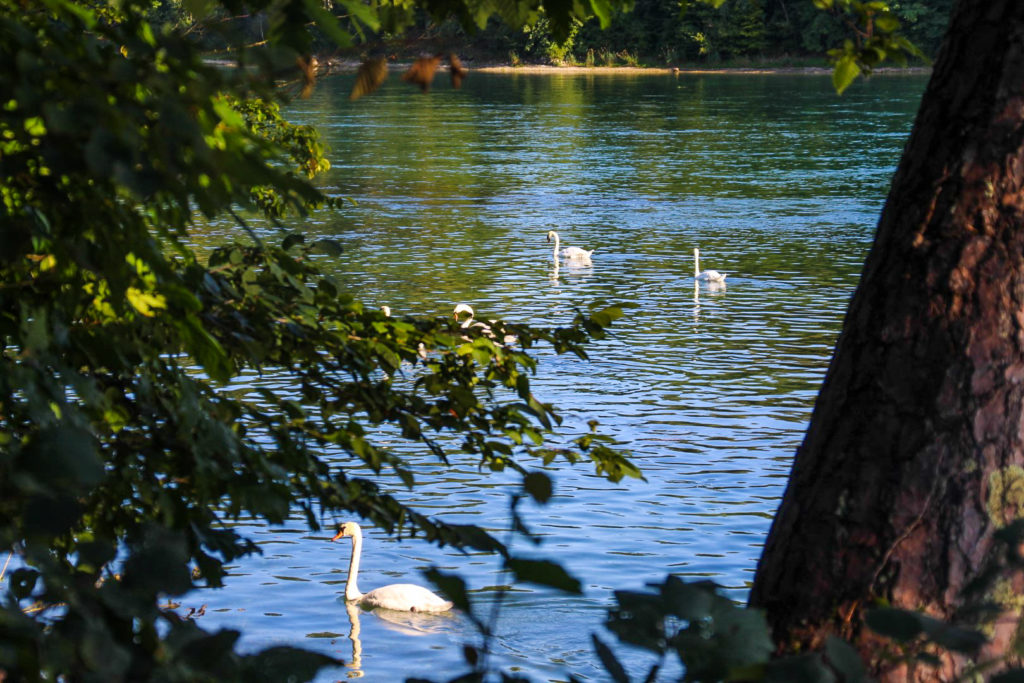
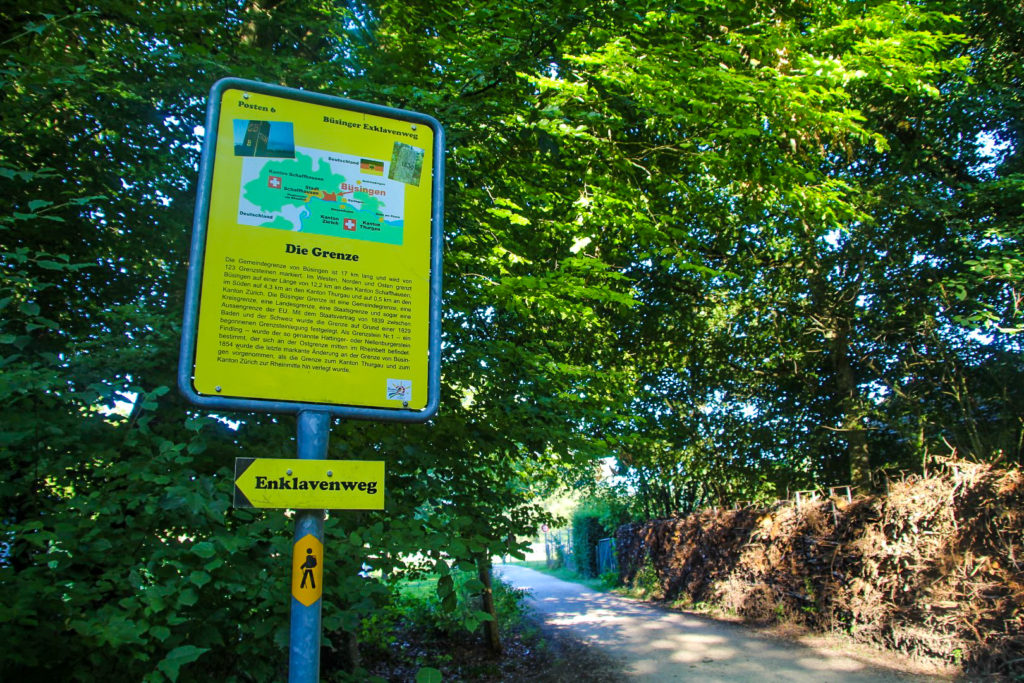
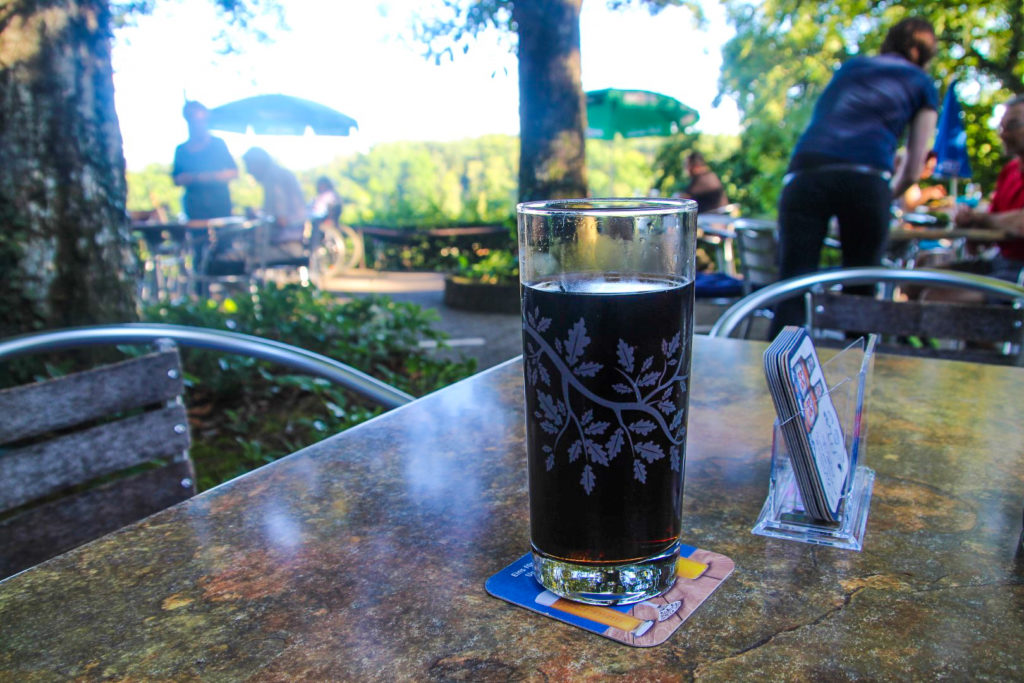
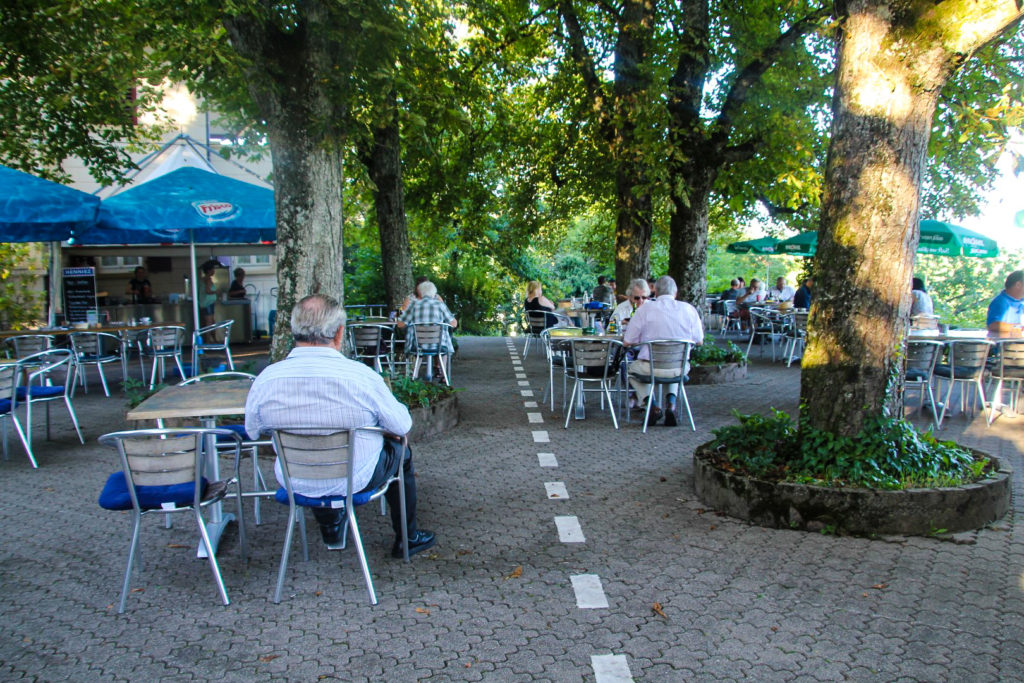
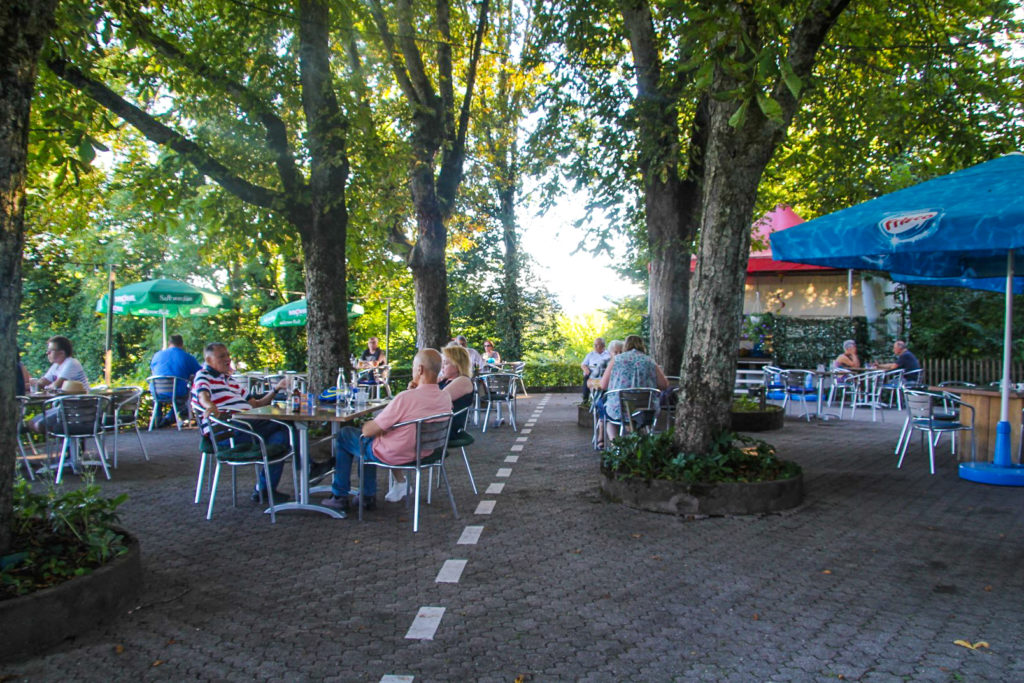
I walked back to the village along a different route, taking me inland through the forest of Rheinhölzle and into Büsingen’s countryside where I passed a gorgeous church on a hill.
It had been an interesting time in this small corner of Germany which feels and looks more like the surrounding Switzerland. I wouldn’t be surprised if it is annexed by Switzerland one day, especially since the residents seem to prefer Switzerland over Germany as their motherland. Something that is very obvious as Swiss flags are seen all over the private gardens.
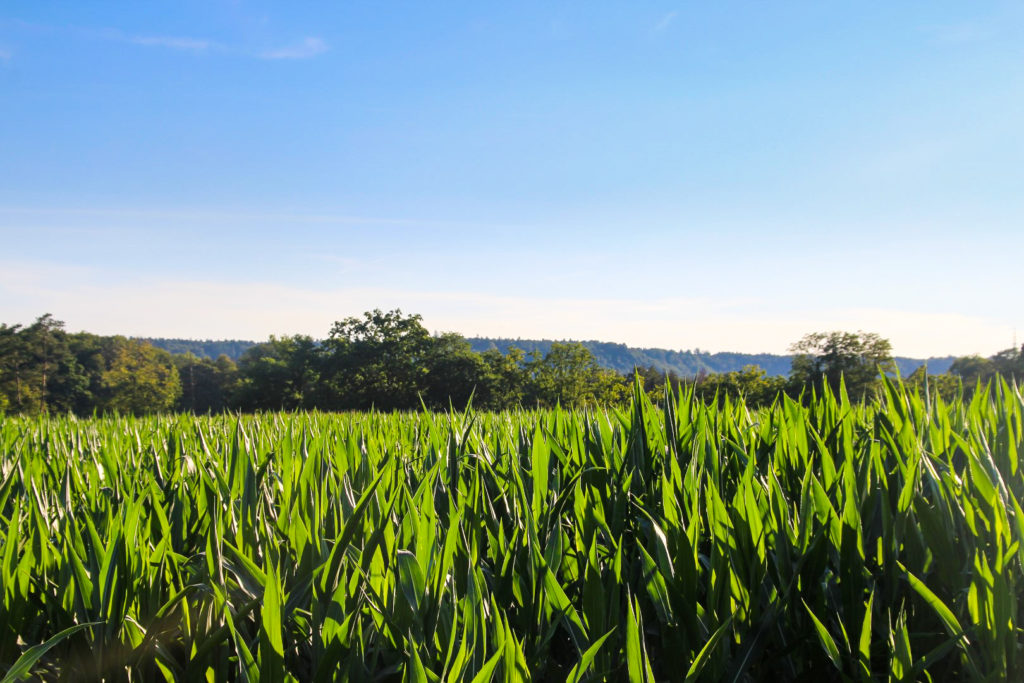
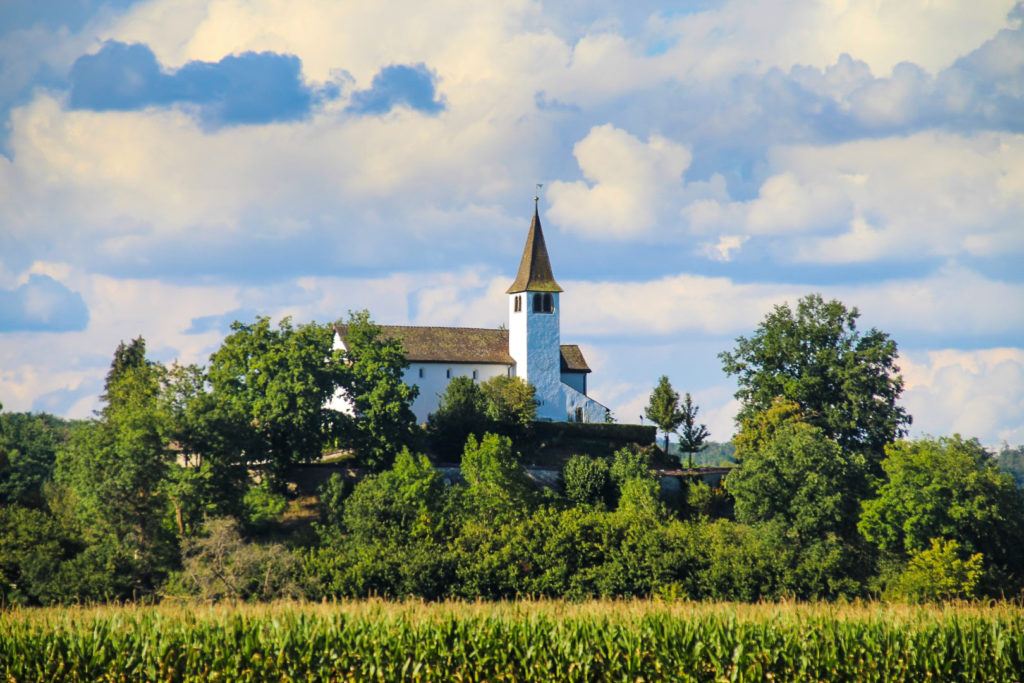
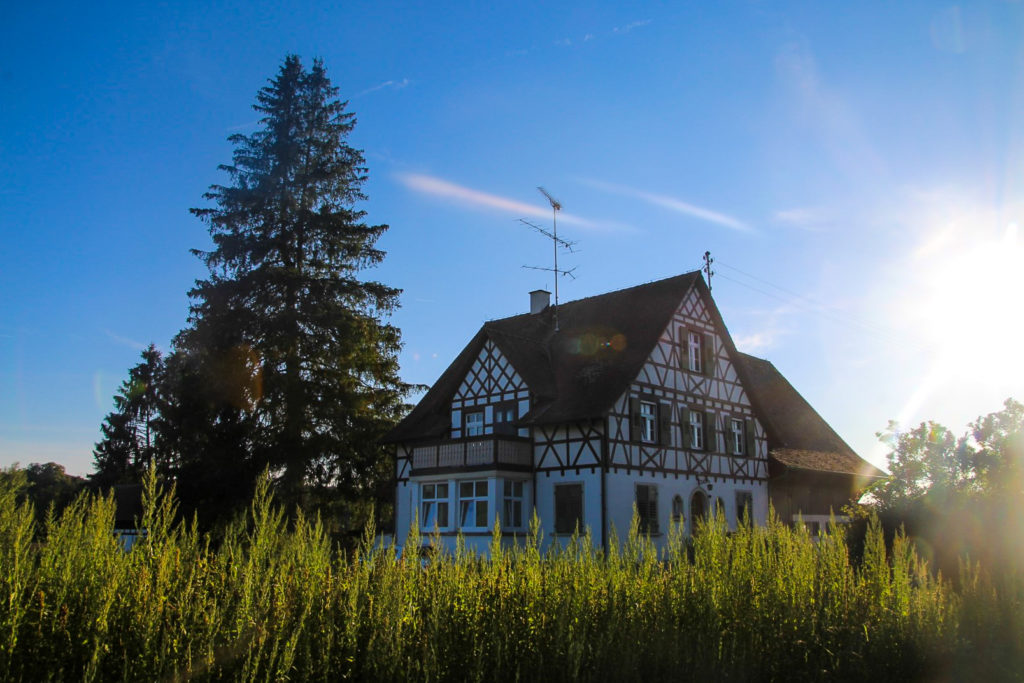
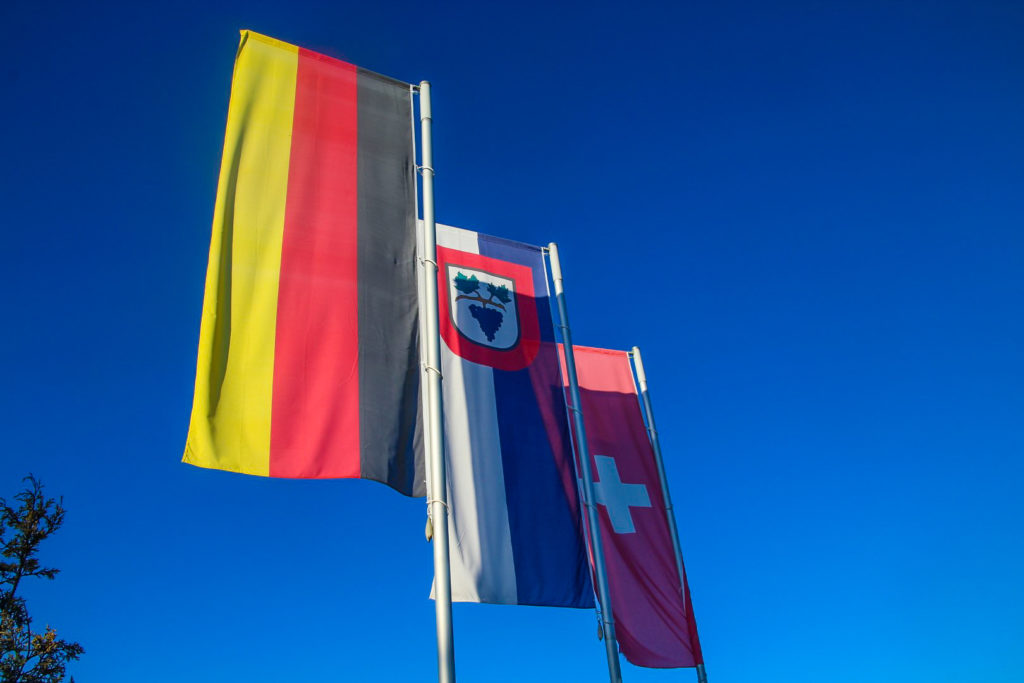
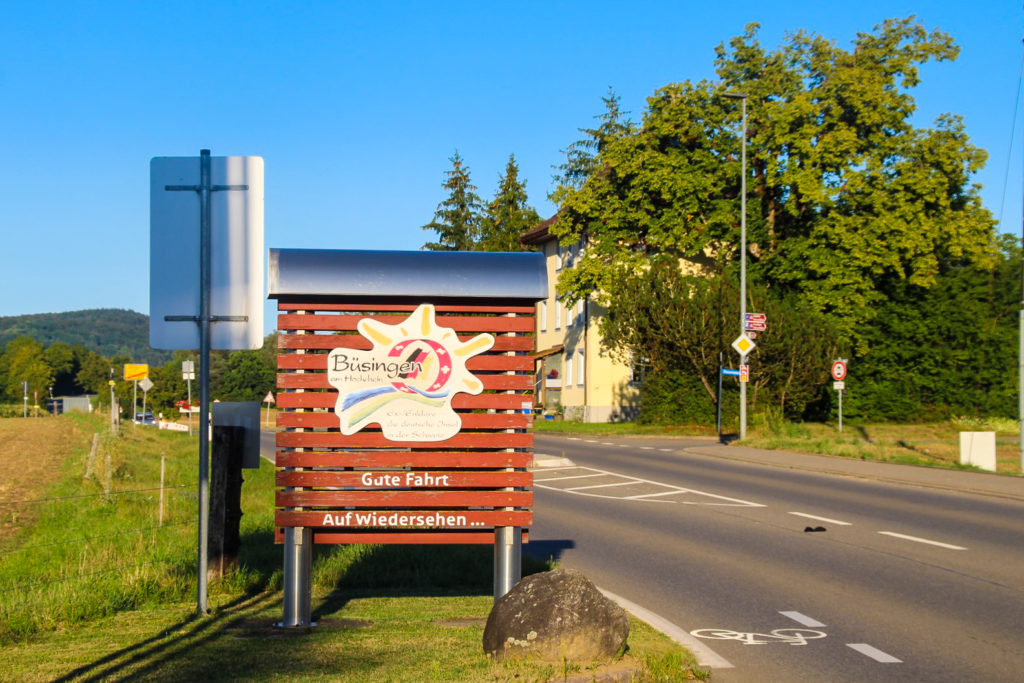
The Rhine Falls, the most powerful waterfall in Europe
Fifteen minutes of driving from Büsingen back into Switzerland, I arrived at my last stop for the day, the Rhine Falls. The falls were formed during the last ice age, and they are 150 metres wide and 23 metres high. Funnily enough, fish can’t climb the falls, except for eels that can worm their way up over the rocks! Since it’s the largest and most powerfall waterfall in all of Europe, there was no way I could miss it!
I parked my car at a large free parking lot behind Laufen Castle, which overlooks the Rhine Falls. I walked over a railway bridge to the other side of the Rhine where the views of the falls are supposed to be the greatest. I couldn’t see the falls in all their glory from the bridge, but I could hear them and sense their force. As I descended from the bridge, the powerful falls suddenly came into view. Although they can’t beat the beauty of Icelandic or Norwegian waterfalls, I’d never experienced any fall so forceful before.
I walked along the banks of the Rhine for quite a while, discovering viewpoint after viewpoint and at one point getting so close to the falls that I could touch them. It was an amazing end to a long day.
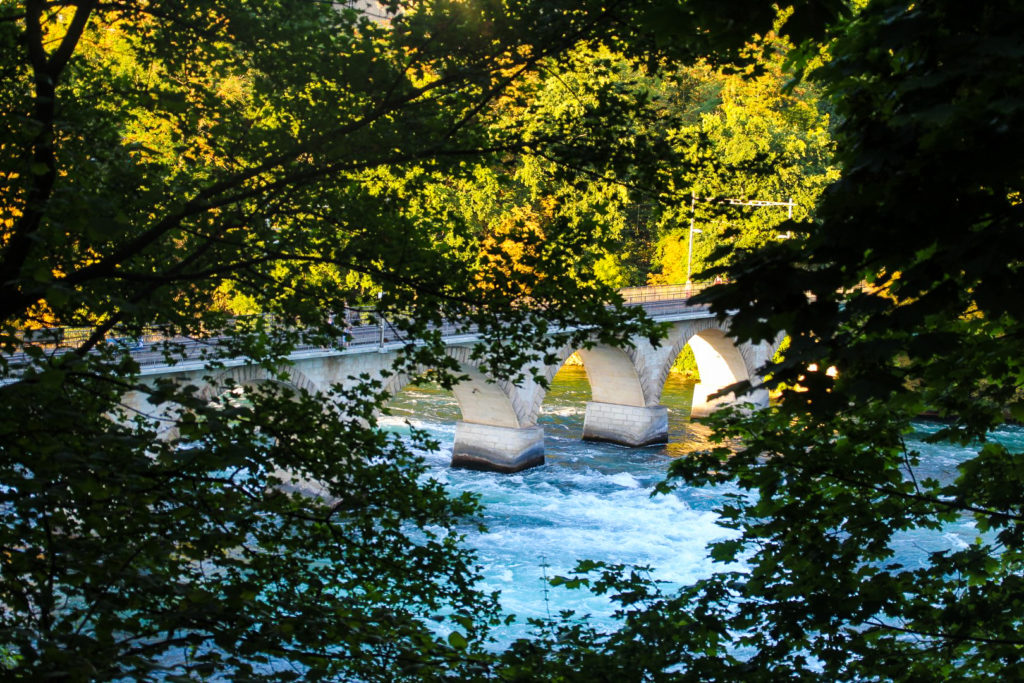
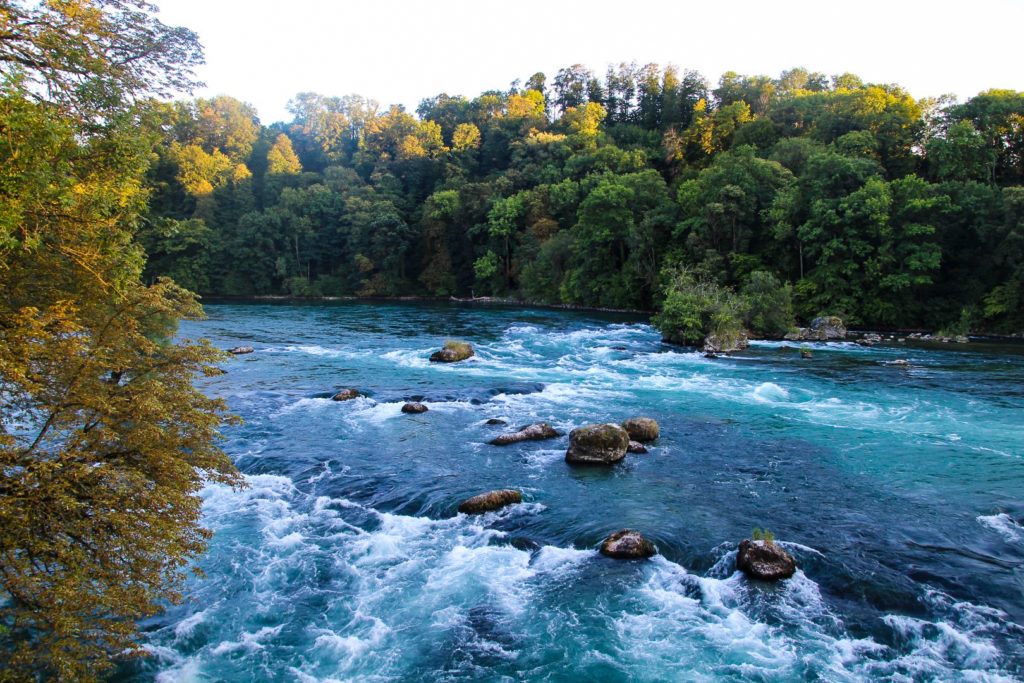
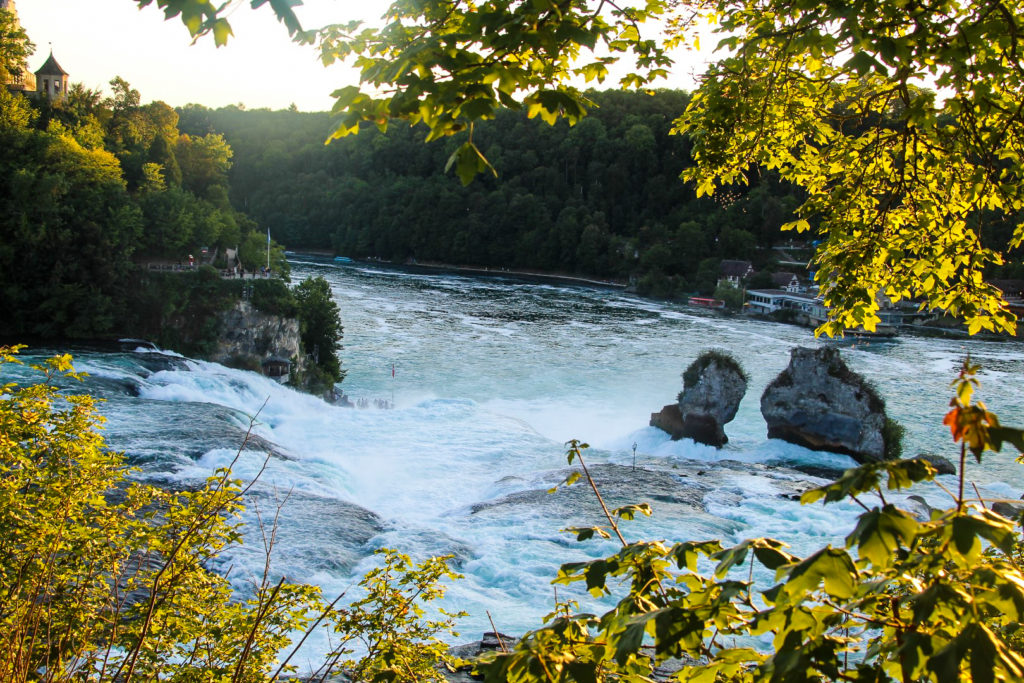
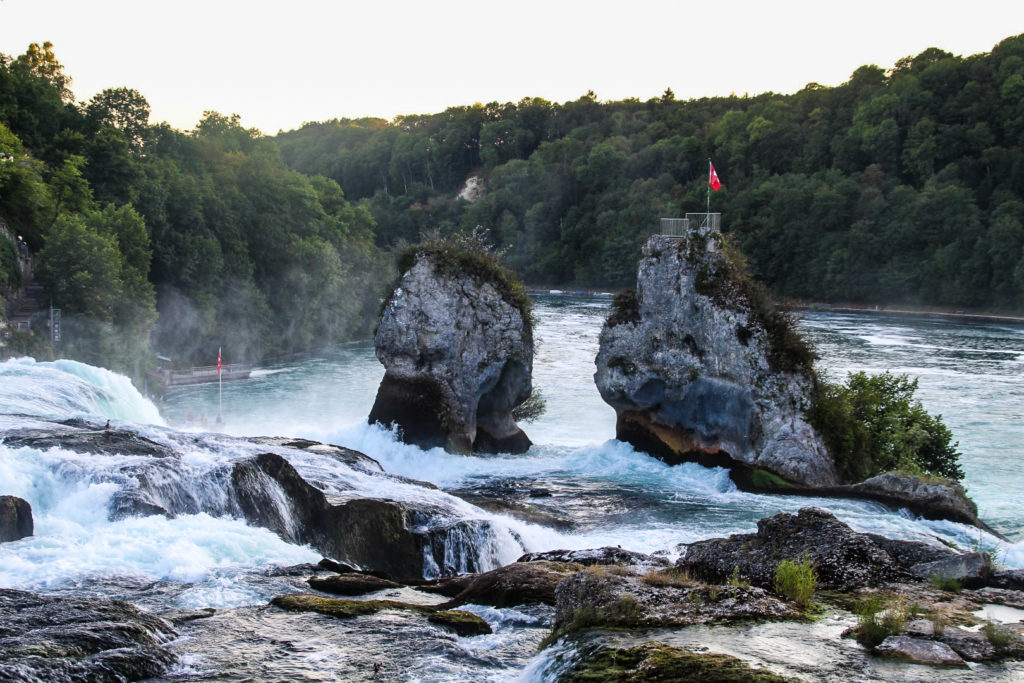
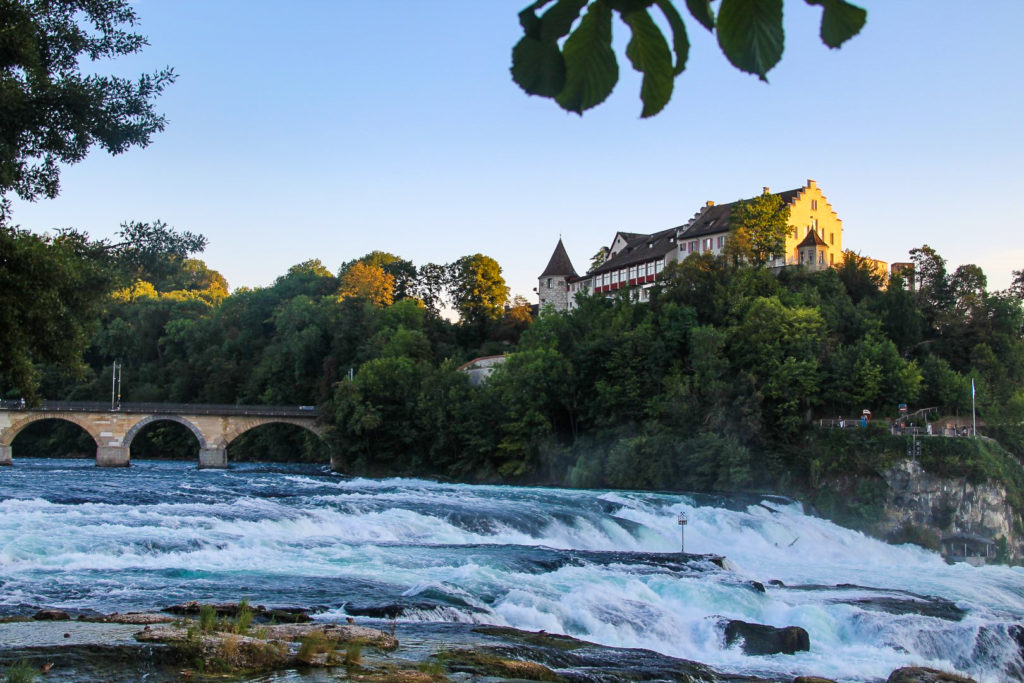
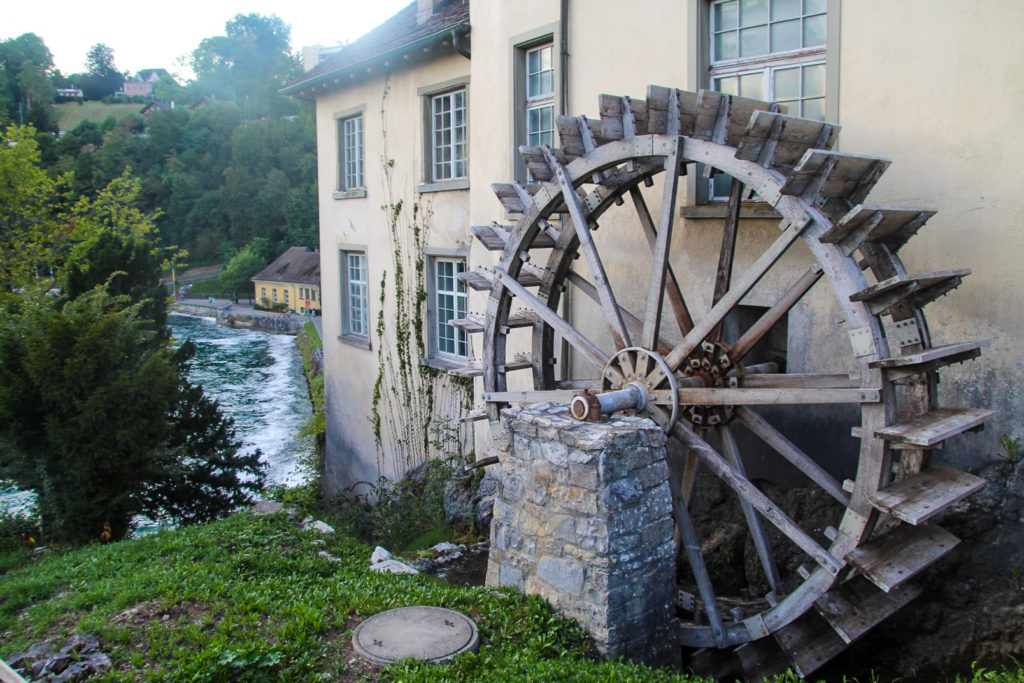
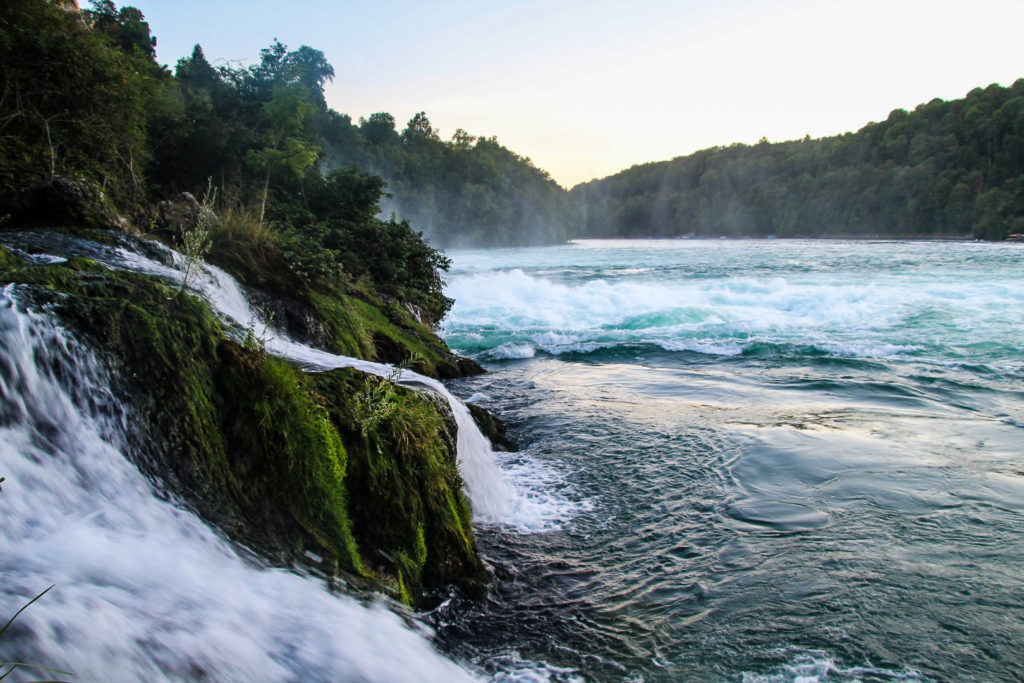

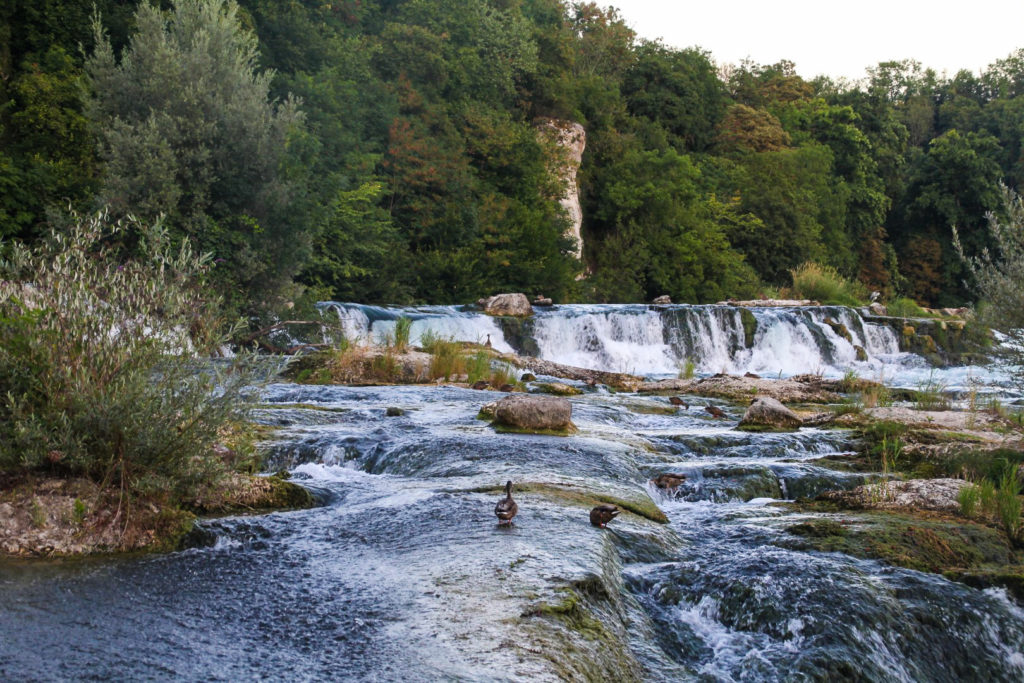
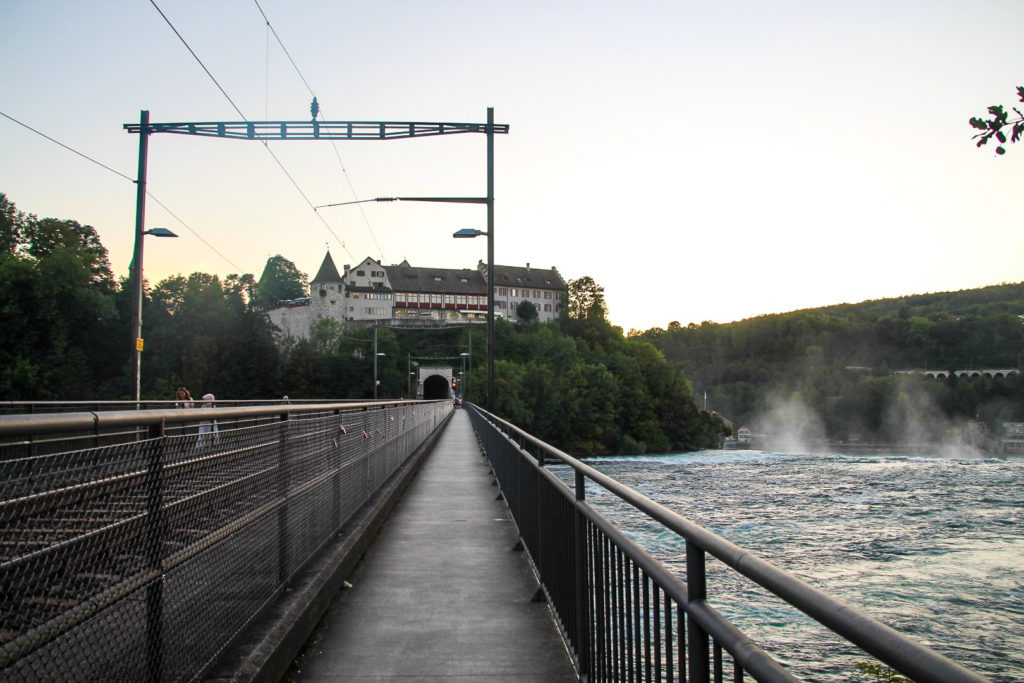
I had actually planned to sleep in the car at the parking lot because I thought it would be cool to spend the night in Switzerland before returning to Germany, but I didn’t feel safe. There were lots of other people around, including groups of men that hung around after dark. As a solo female, I felt vulnerable, so I decided to leave.
I ended up driving for over an hour in the dark to get to a place where I could park in nature amongst campervans and motorhomes. I ended up in the outskirts of Donaueschingen, the very city where another great European river has its spring – the Danube.
I was so excited to return to Switzerland with my mum to experience more of the country in November, but unfortunately, the pandemic had our trip cancelled. Hopefully, we’ll be able to go this year as I can’t wait to see what else the gorgeous country has to offer.
Leave a Comment
Pingback: The Black Forest: Fairytale villages and forested peaks in the southwest corner of Germany – Northtrotter on 11/04/2021
Pingback: An Odd World: Uncovering the Border Complexities of the Alps – Northtrotter on 11/04/2021

2 COMMENTS